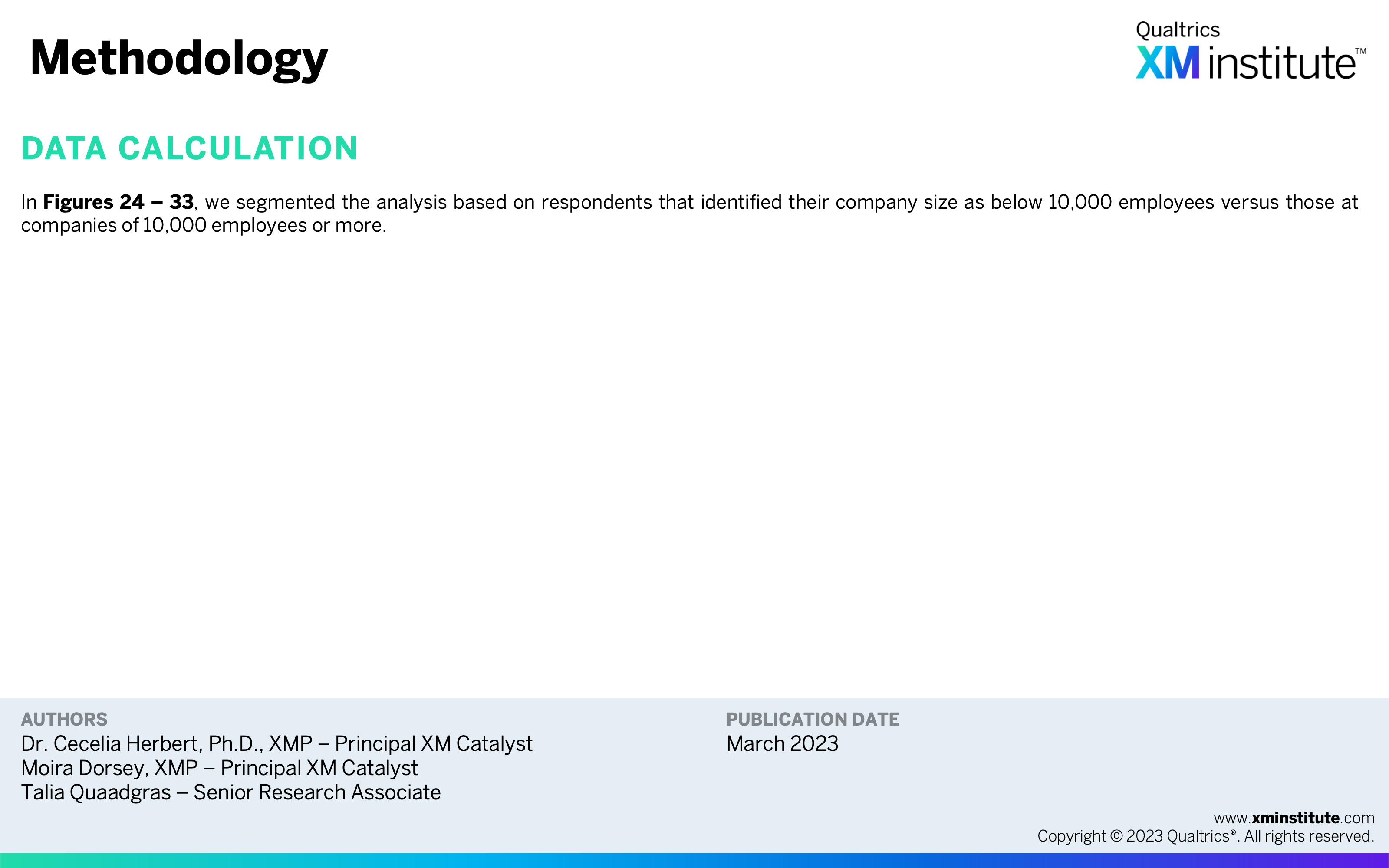Key Findings
To understand the current state of Experience Management (XM) in HR, Qualtrics XM Institute surveyed 911 senior leaders in HR/People Operations at companies with 1,000 or more employees about their companies’ XM efforts. Highlights from the research include:
- HR is growing in importance around the world. Not only are HR organizations growing, with 70% of HR leaders reporting budget increases and 63% reporting headcount increases for the year, but they are also growing their strategic importance. Seventy-four percent of HR leaders said HR is more involved in their company’s strategic initiatives compared to before the COVID-19 pandemic.
- HR leaders reported strong EX management capabilities, but there’s room for improvement. HR leaders rated their employee experience management capabilities as strong across the three elements of technology (71%), culture (69%), and skills and capabilities (73%). They still see the importance of improving their employee experience capabilities; 84% said this is important for their organization to do over the next three years.
- ‘Lack of clear strategy’ is the top obstacle to EX success. Thirty percent of HR leaders cited ‘lack of clear strategy’ as an obstacle. Organizations with fewer than 10,000 employees were more likely to report this as an obstacle (32%) compared to larger companies (23%). Globally, HR leaders cited ‘misaligned incentives and rewards’ and ‘lack of critical skills’ as obstacles next most frequently.
- There’s high perceived value in connecting employee and customer experience. Over four in five HR leaders said it would be ‘valuable’ or ‘extremely valuable’ for their organization to better understand the elements of employee experience that have the strongest impact on customer experience. Meanwhile, just 31% of respondents said their organization is ‘very effective’ at identifying these elements.
- Data privacy and quality are the top concerns for disparate employee data storage. More than fifty percent of respondents cited each of these items as a risk of disparate data storage. Meanwhile, these HR leaders reported their organizations using, on average, 2.3 experience management platforms.
Figures
Here are the figures in this Data Snapshot:
- Study Demographics
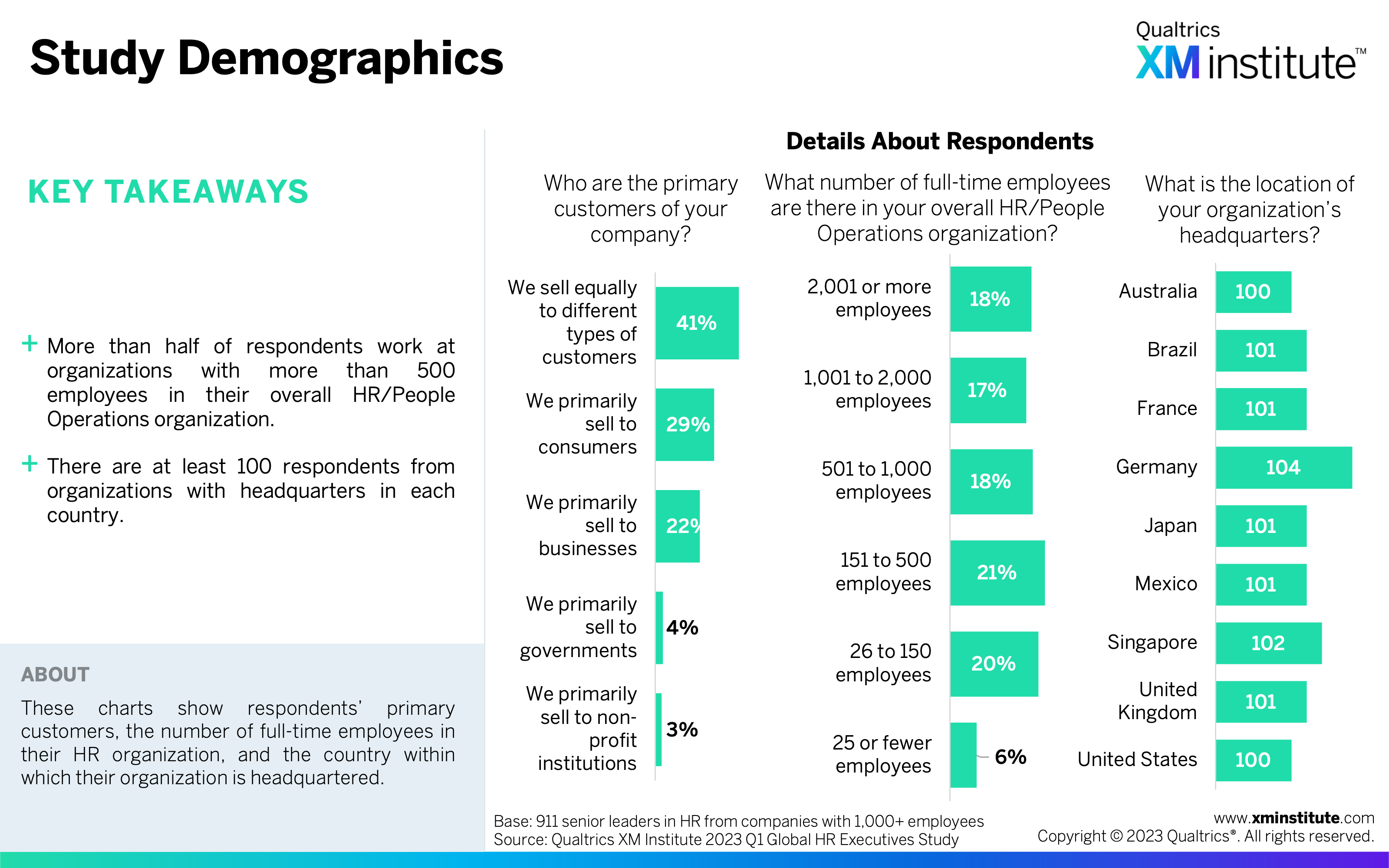
- Changes to HR Budgets and Headcount
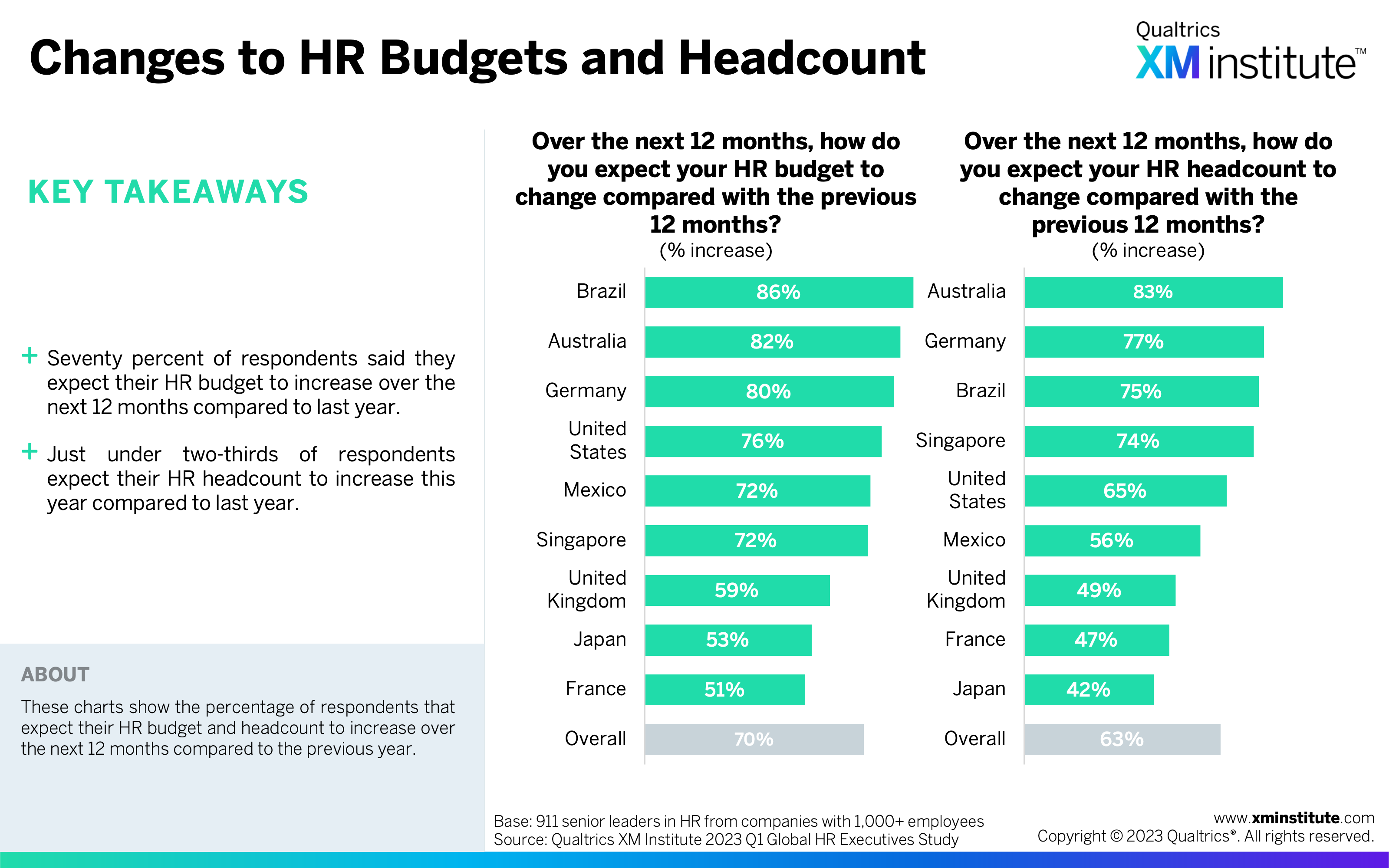
- HR Involvement in Strategic Initiatives After COVID
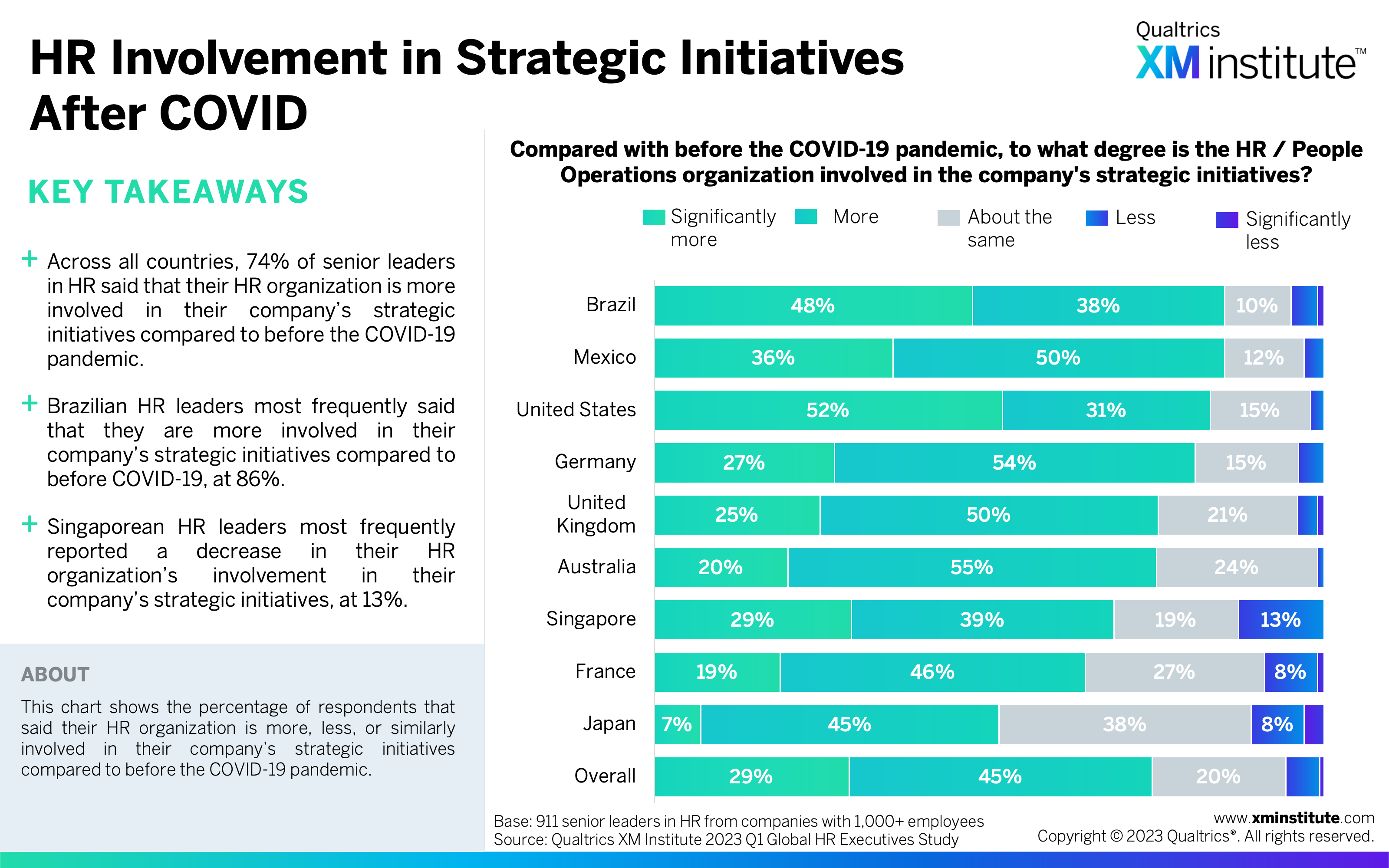
- Focus on Employee Experience After COVID
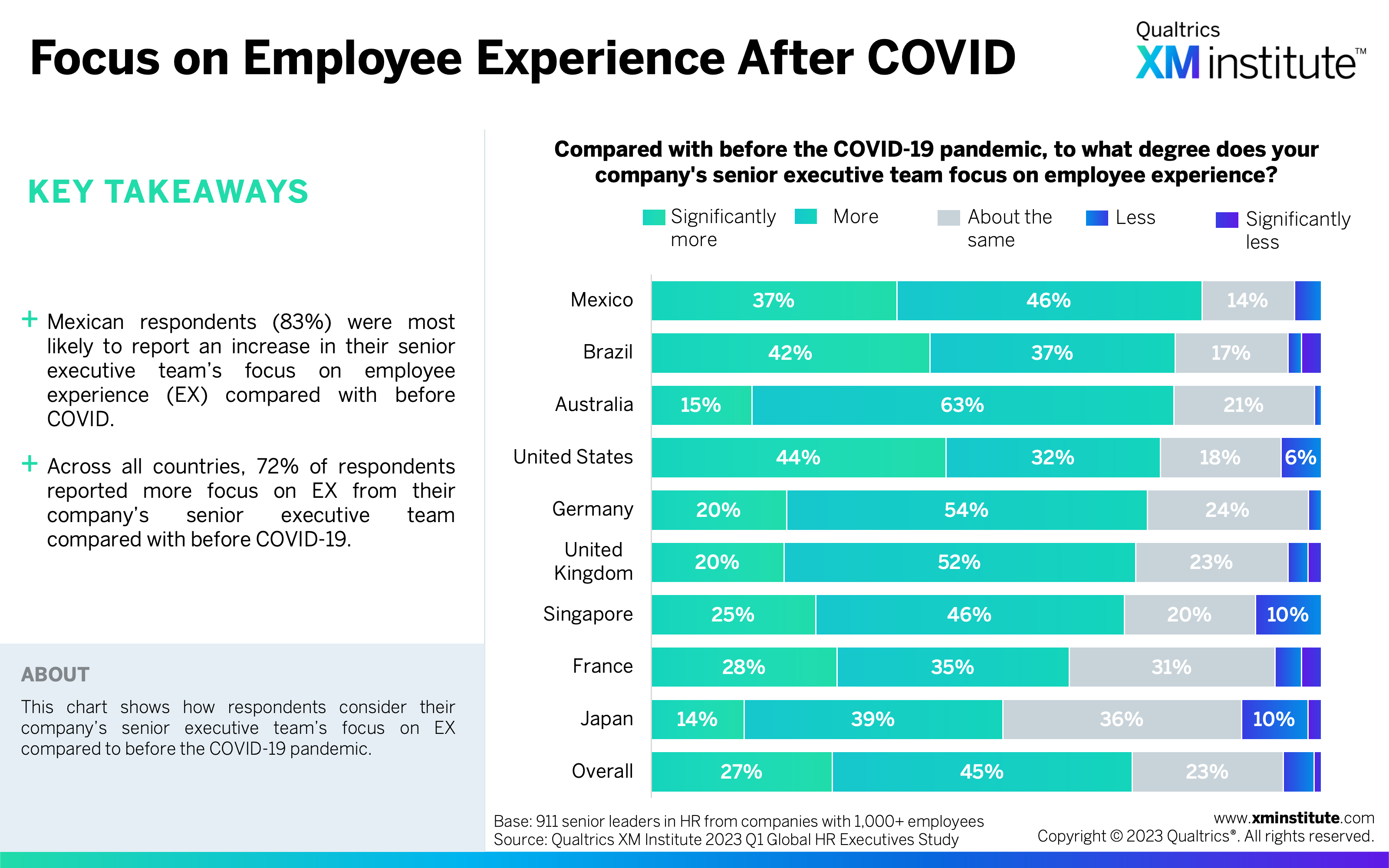
- Future Need to Respond to Unexpected Events
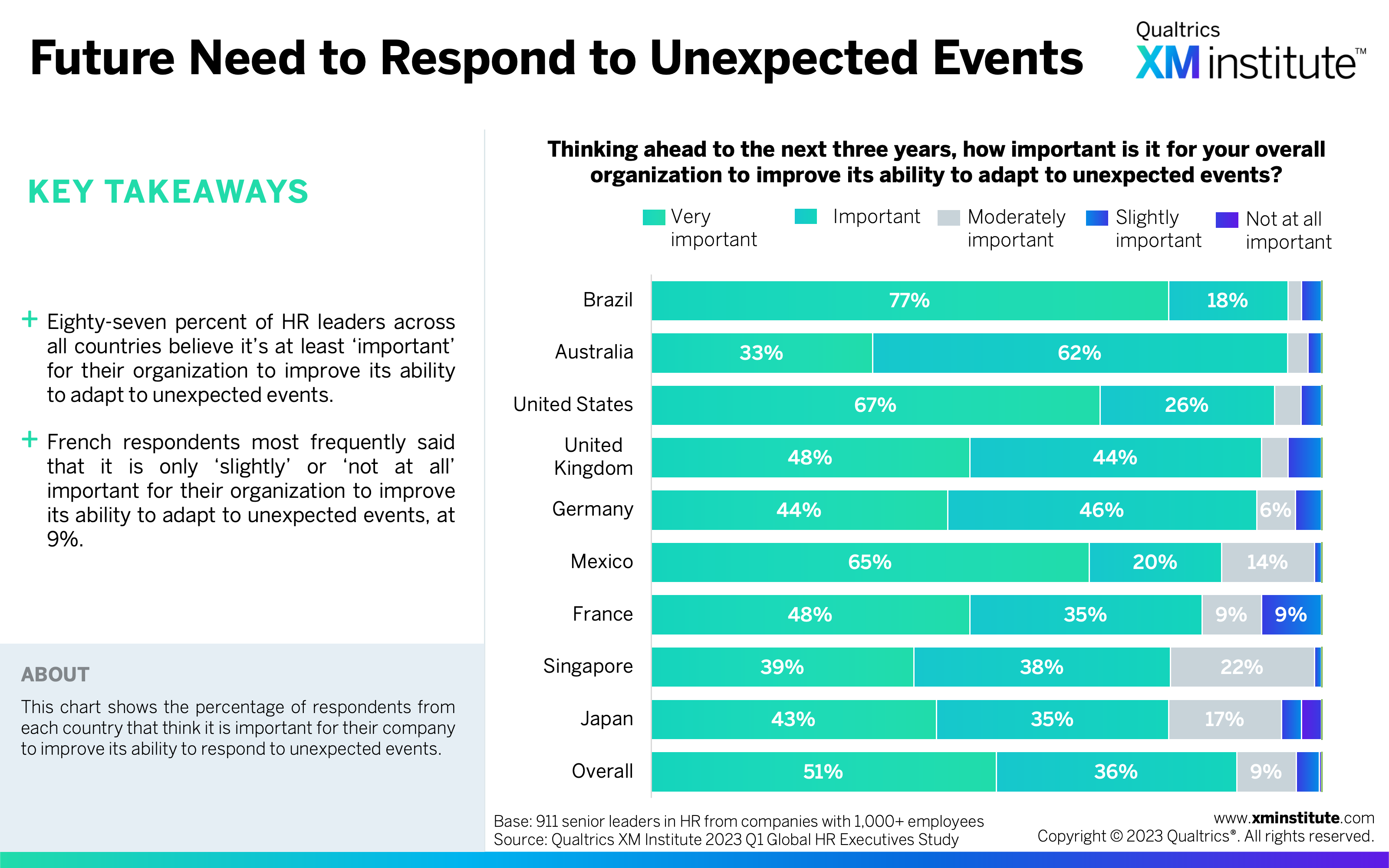
- Future EX Improvement
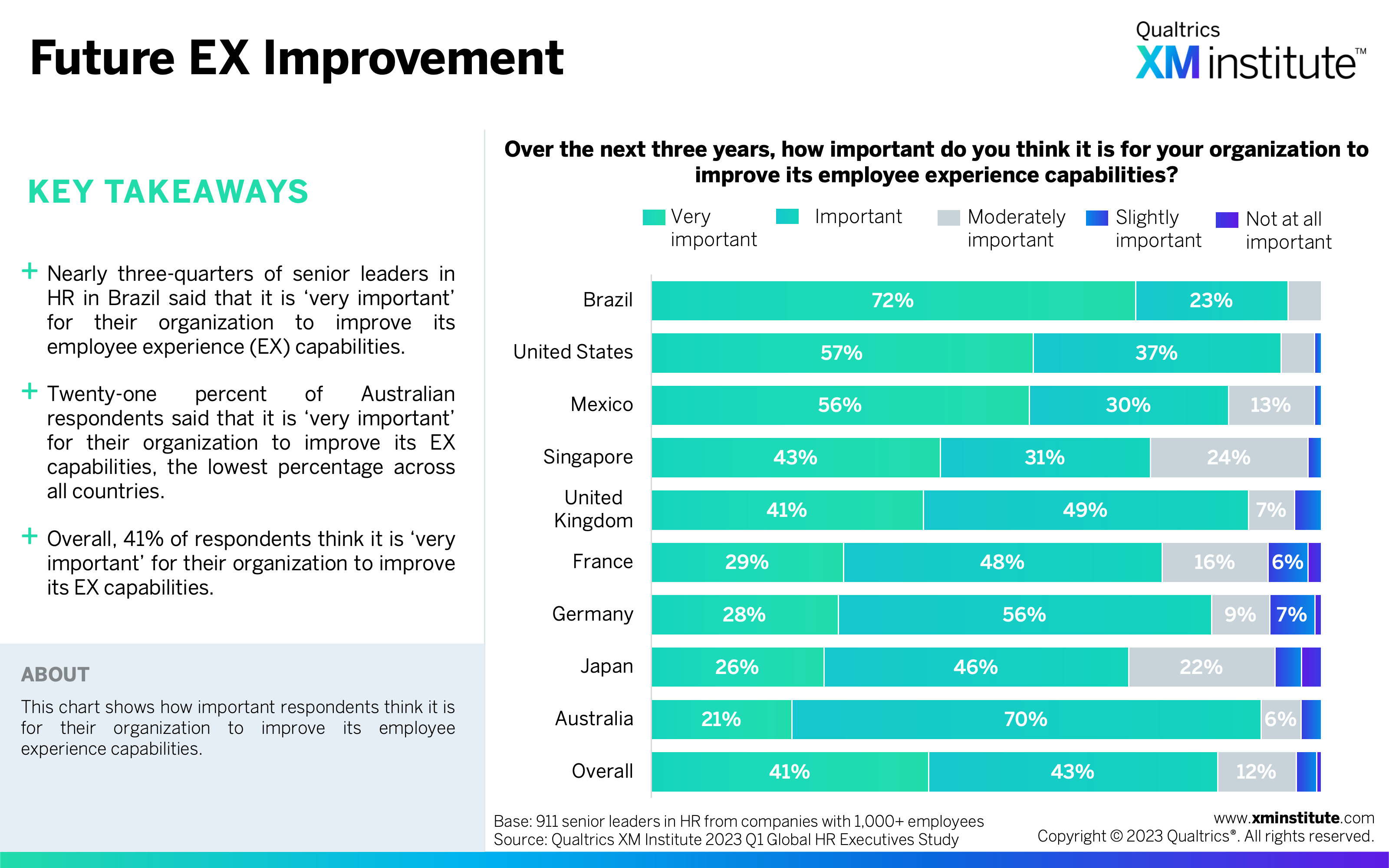
- EX Management Technological Capabilities
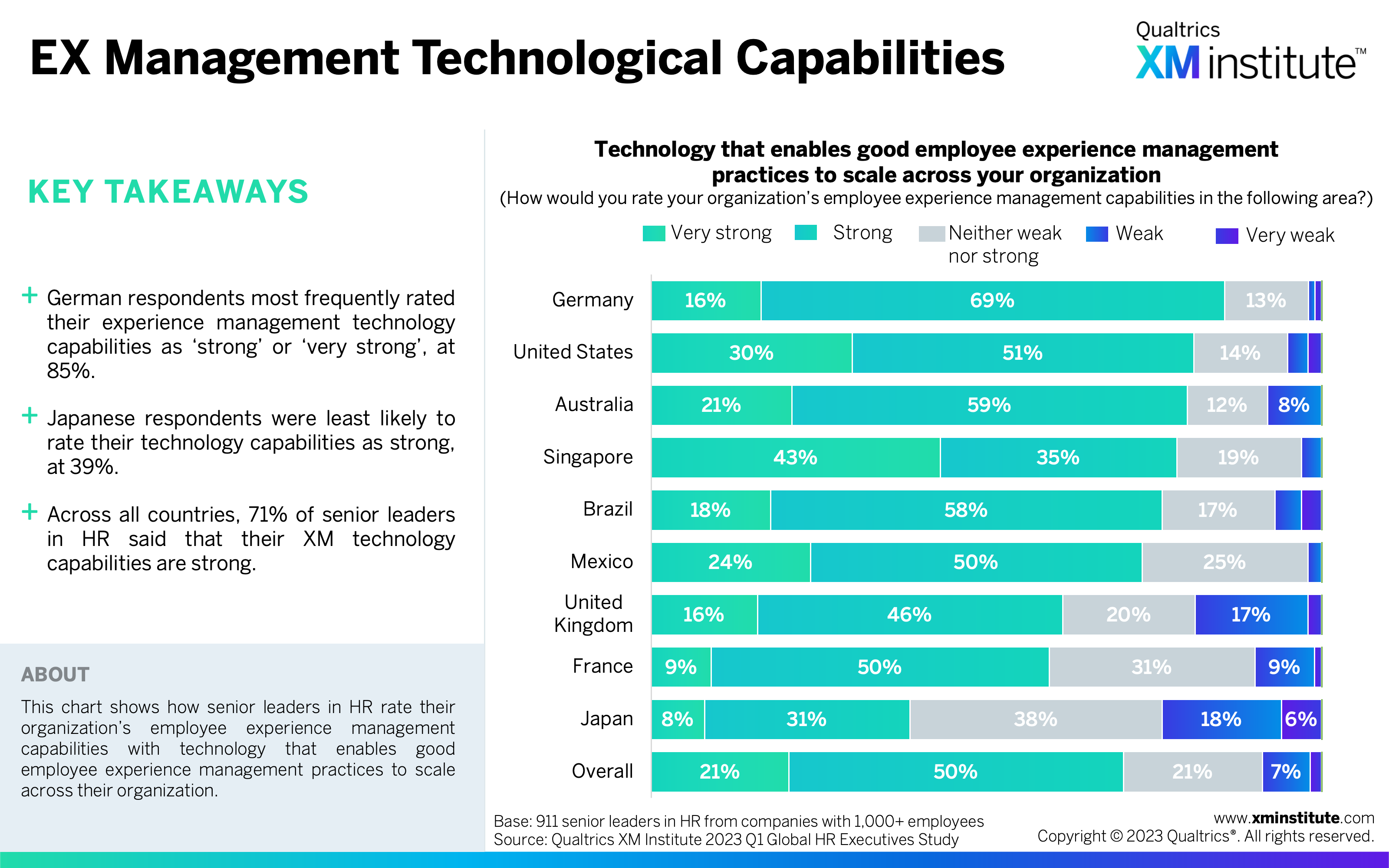
- EX Management Culture Capabilities
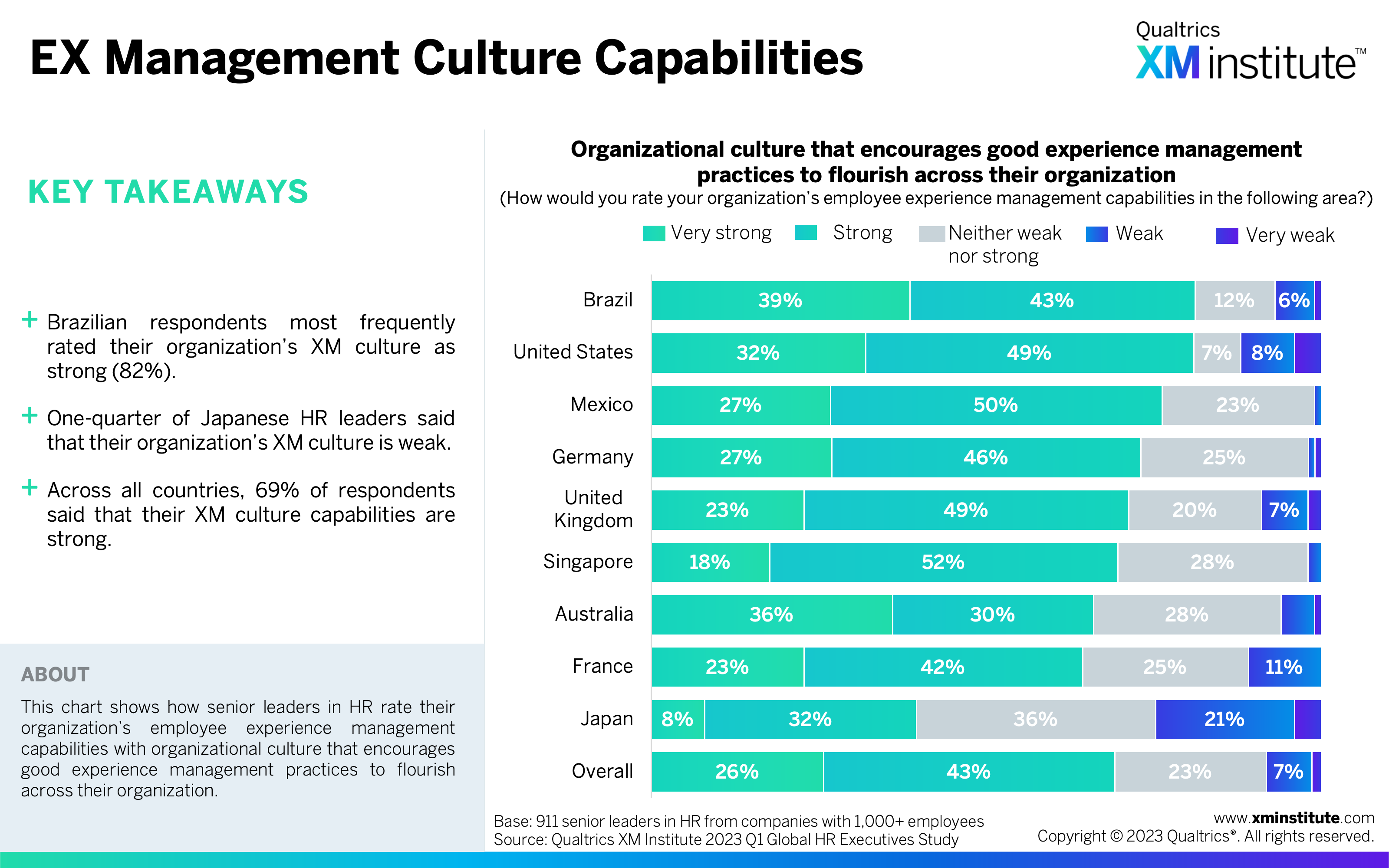
- EX Management Skills and Capabilities
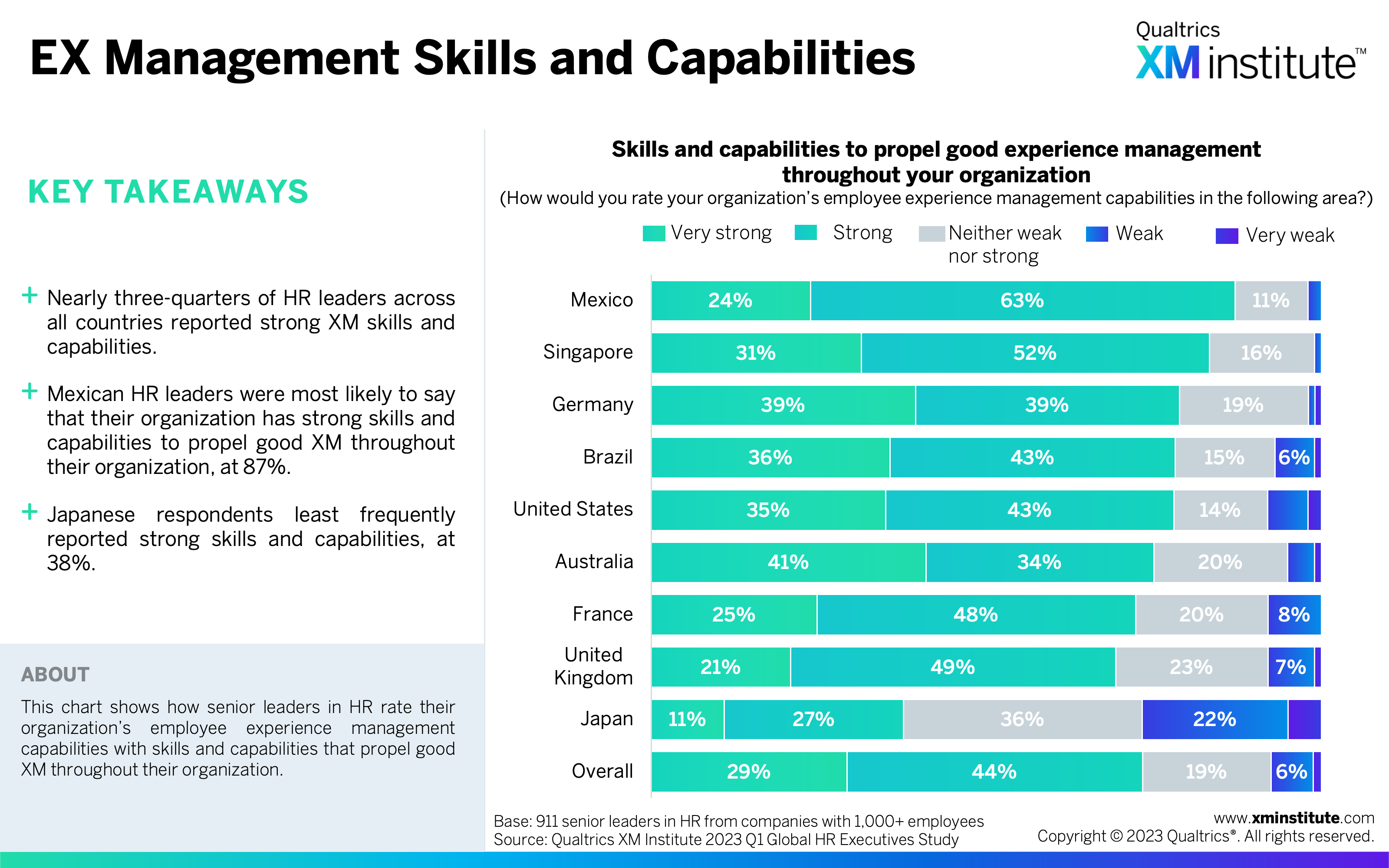
- EX Management Agility
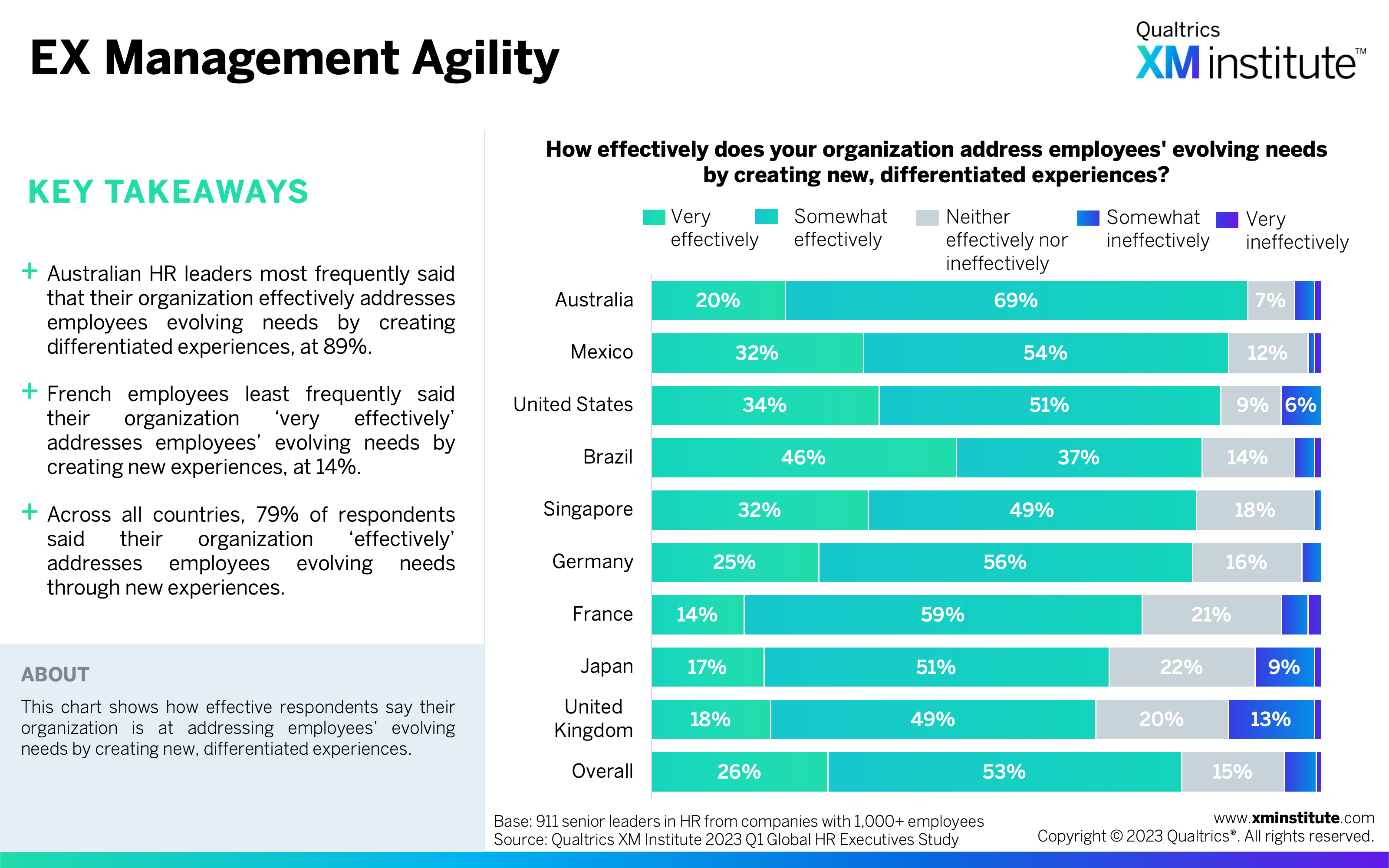
- Future HR Involvement in XM Capabilities
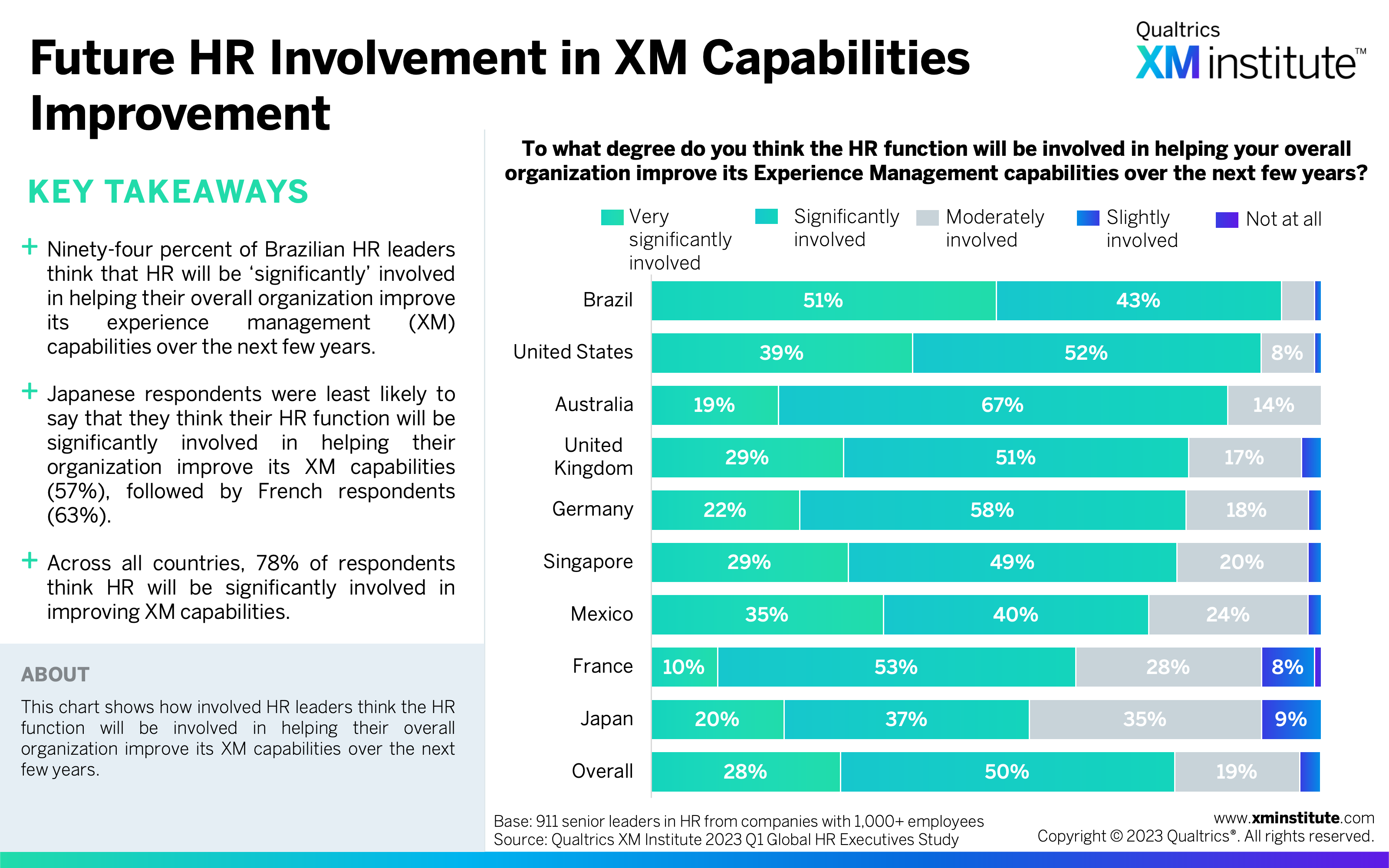
- XM Importance
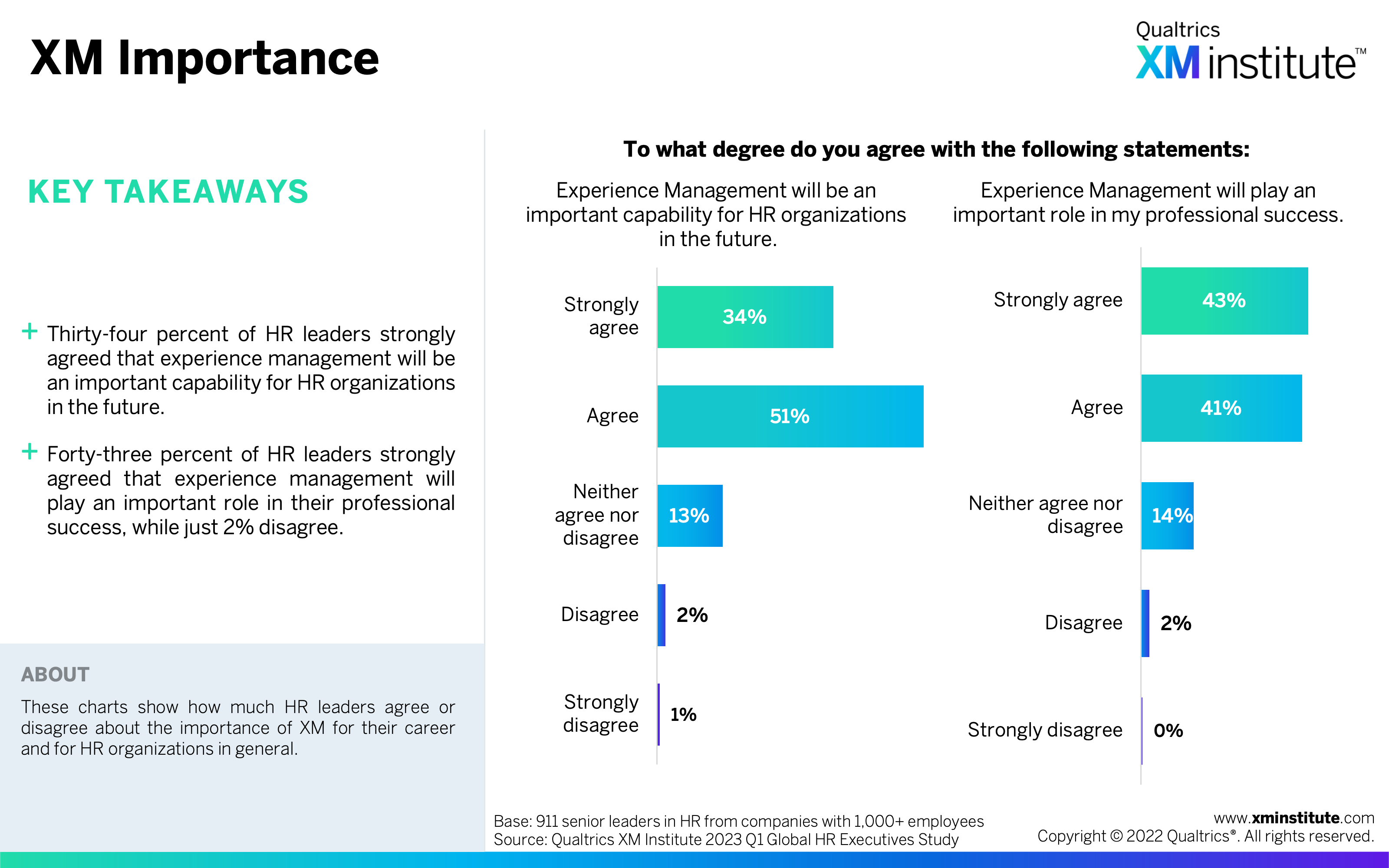
- 2023 Areas of Focus
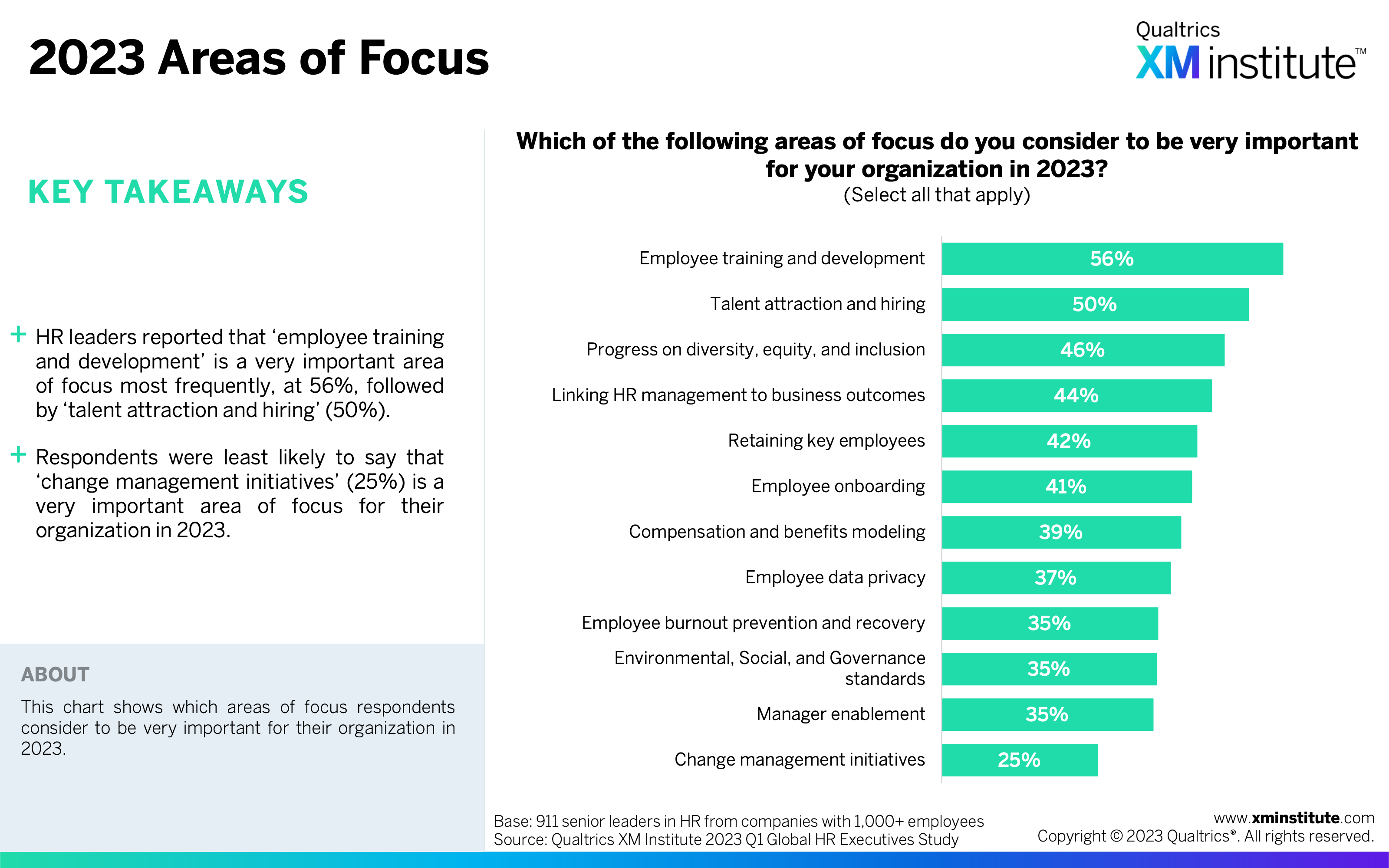
- Areas of Focus by Country
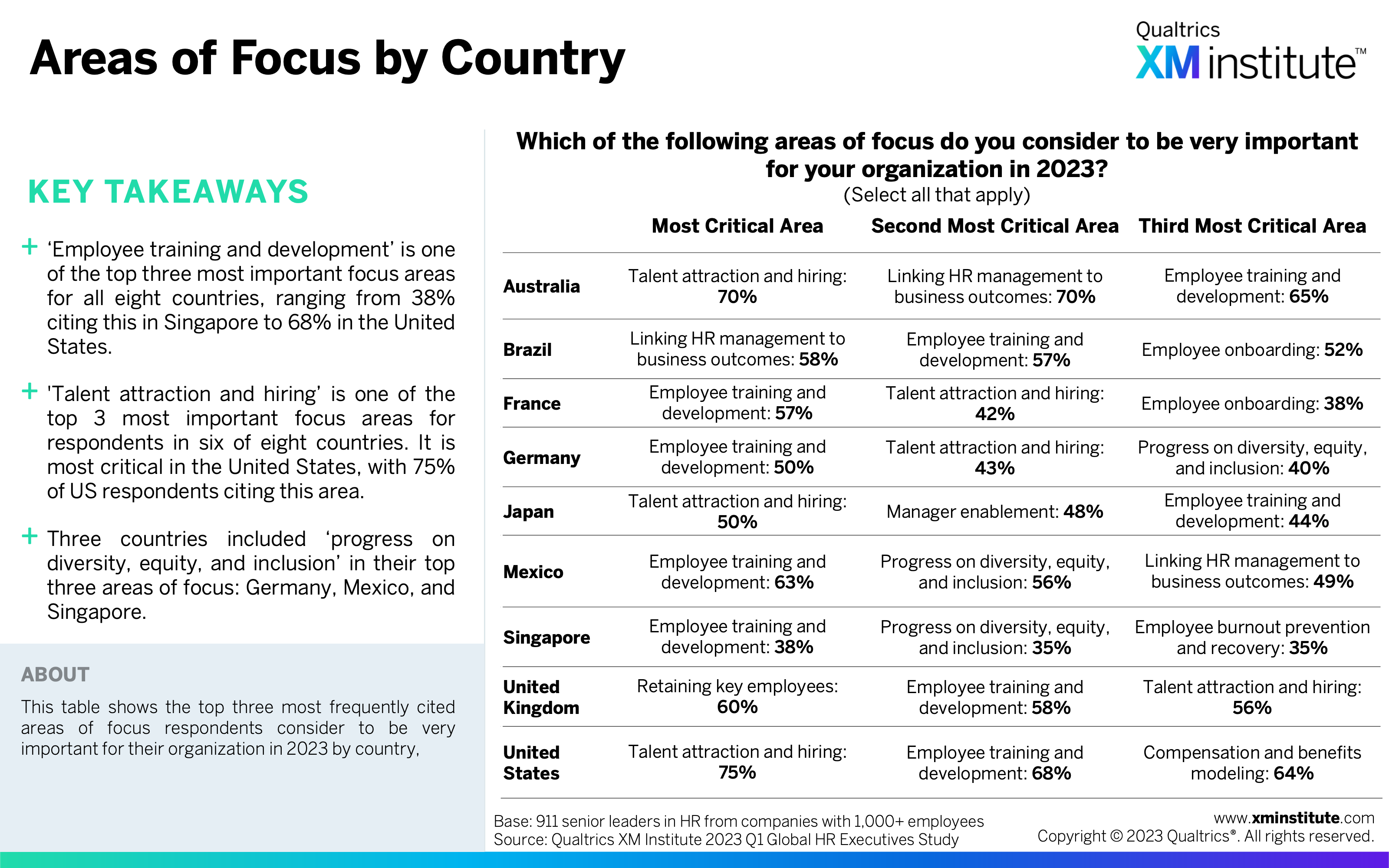
- 2023 Obstacles to EX Efforts
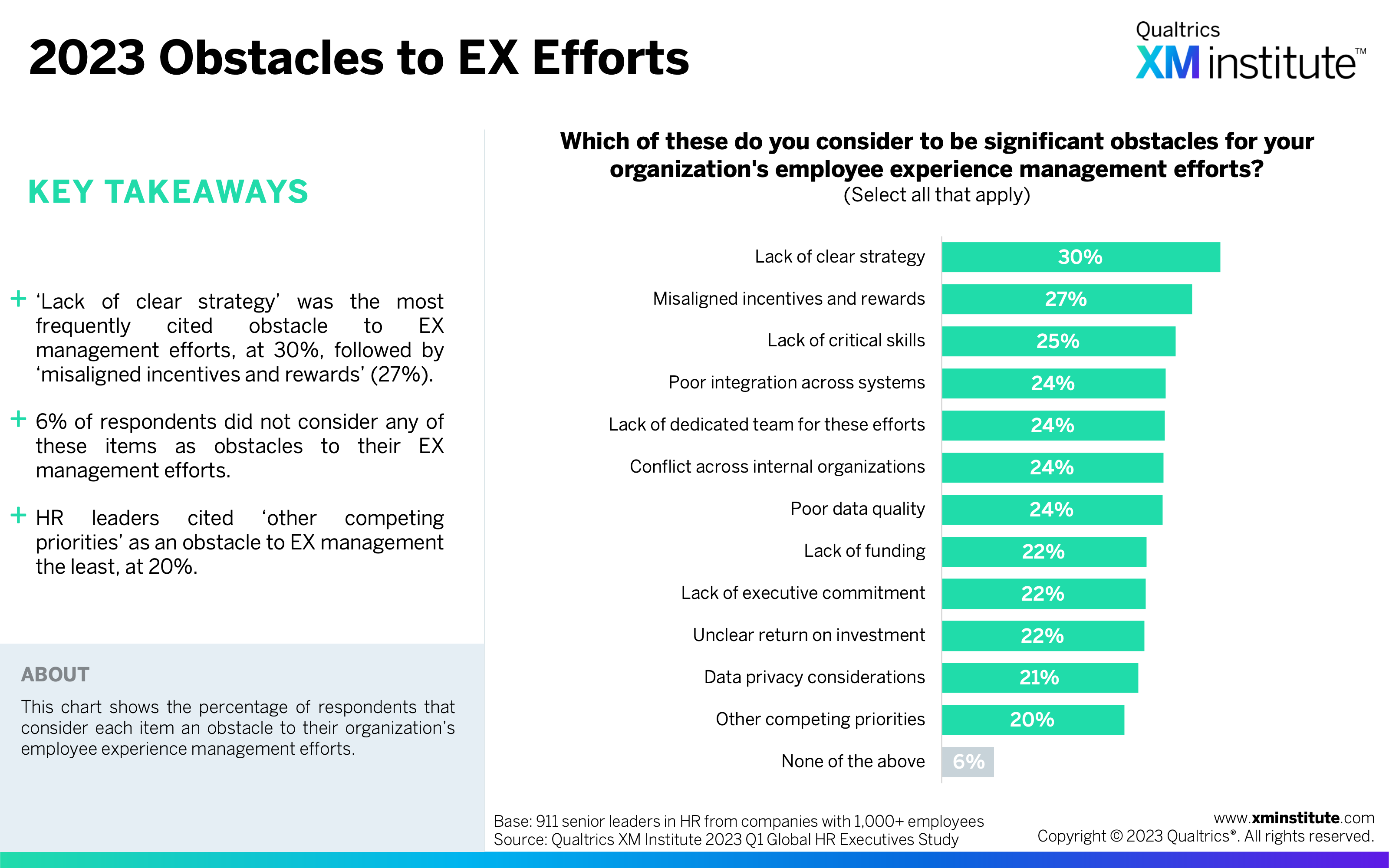
- Obstacles to EX Success by Country
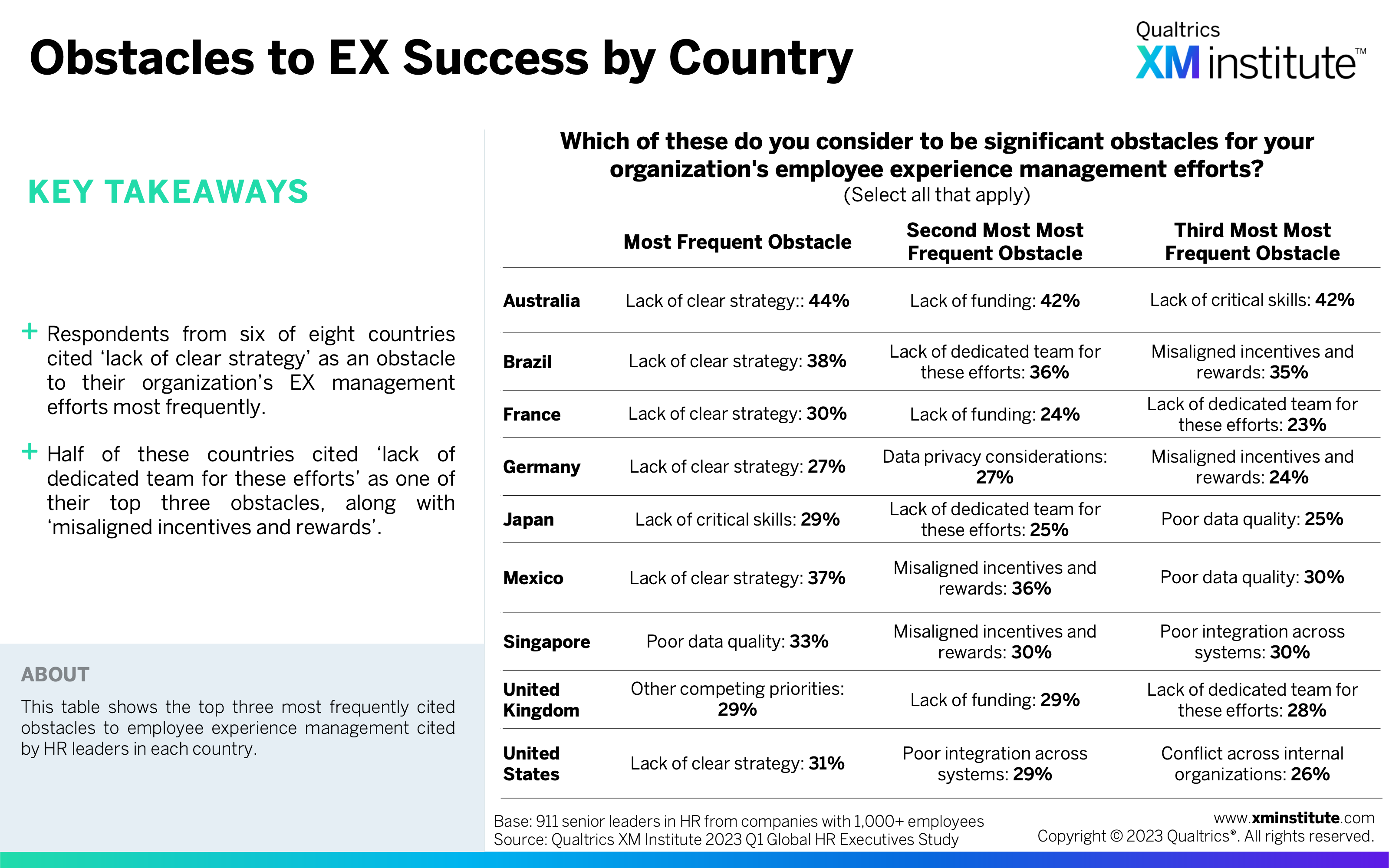
- Value of Connecting Employee and Customer Experience
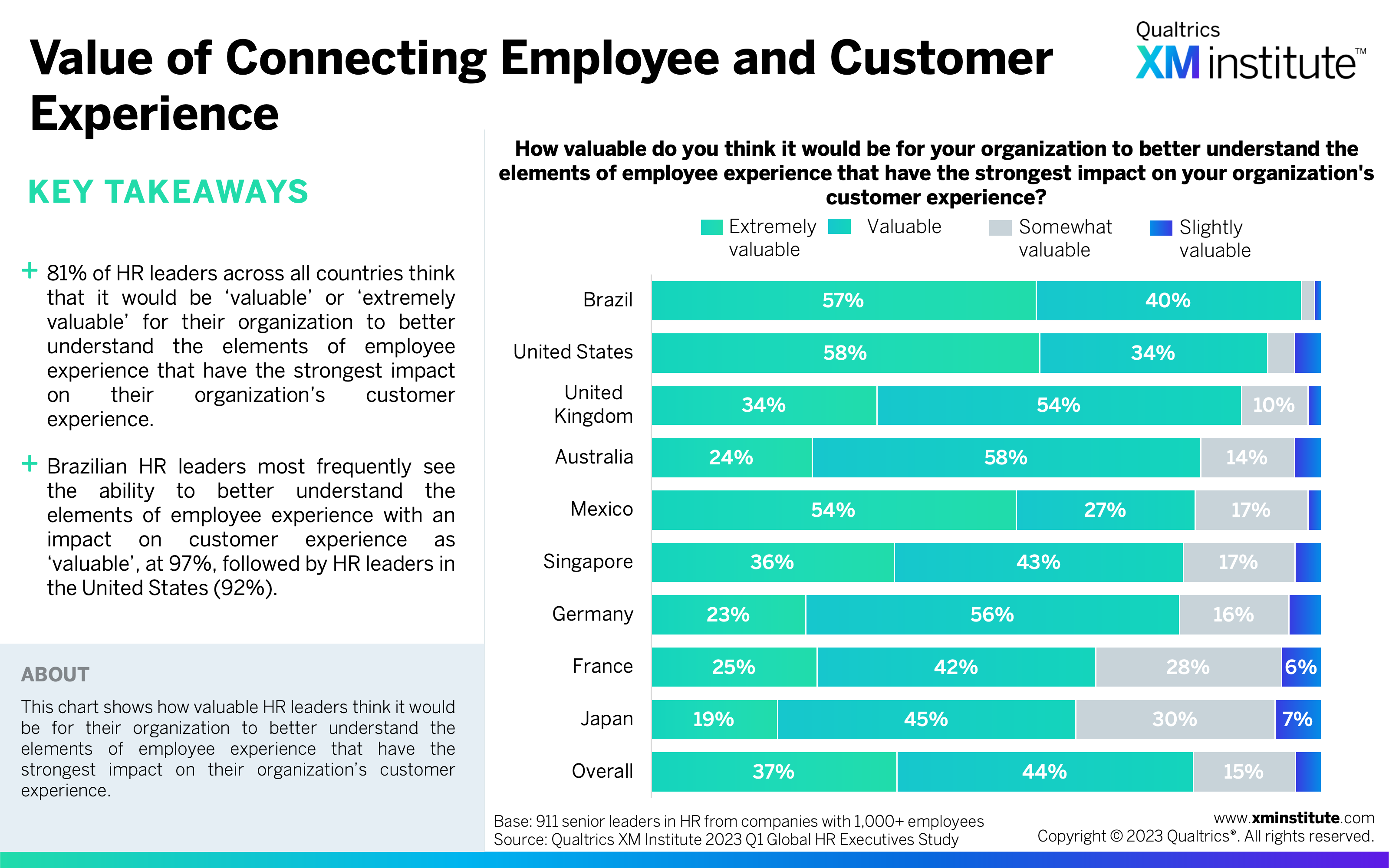
- Effectiveness at Connecting Employee and Customer Experience
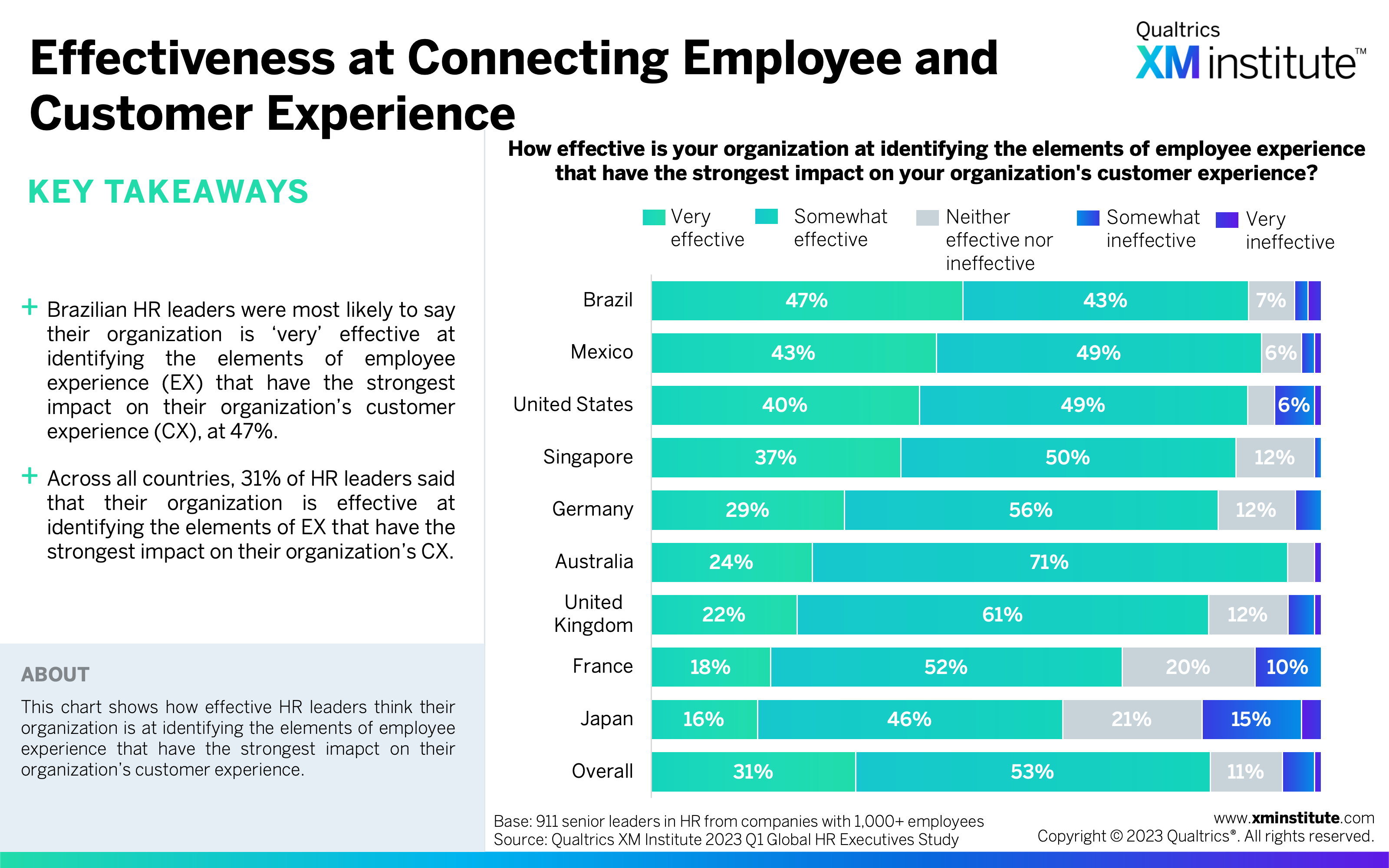
- Executive Use of EX Feedback
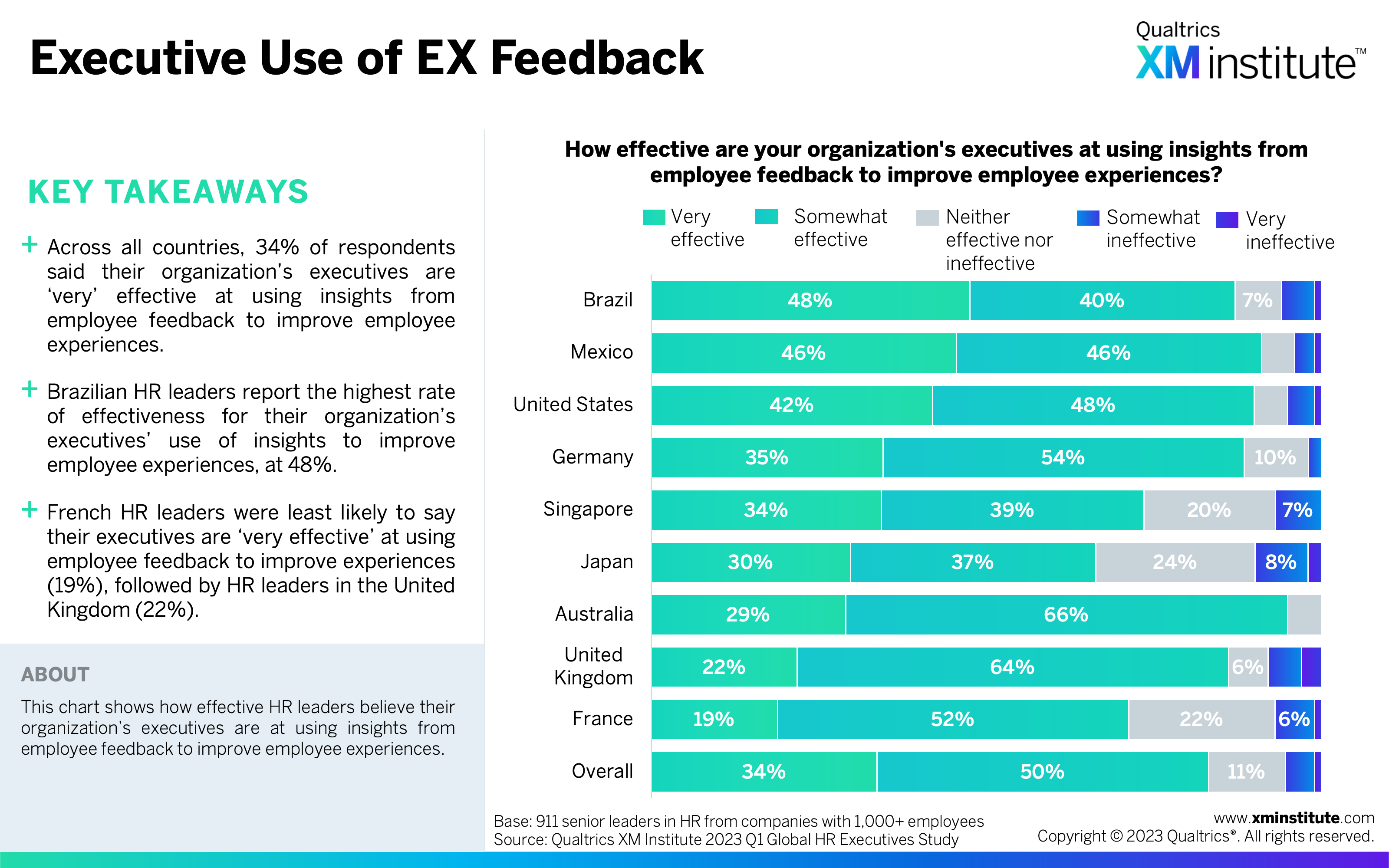
- Employee Listening Frequency
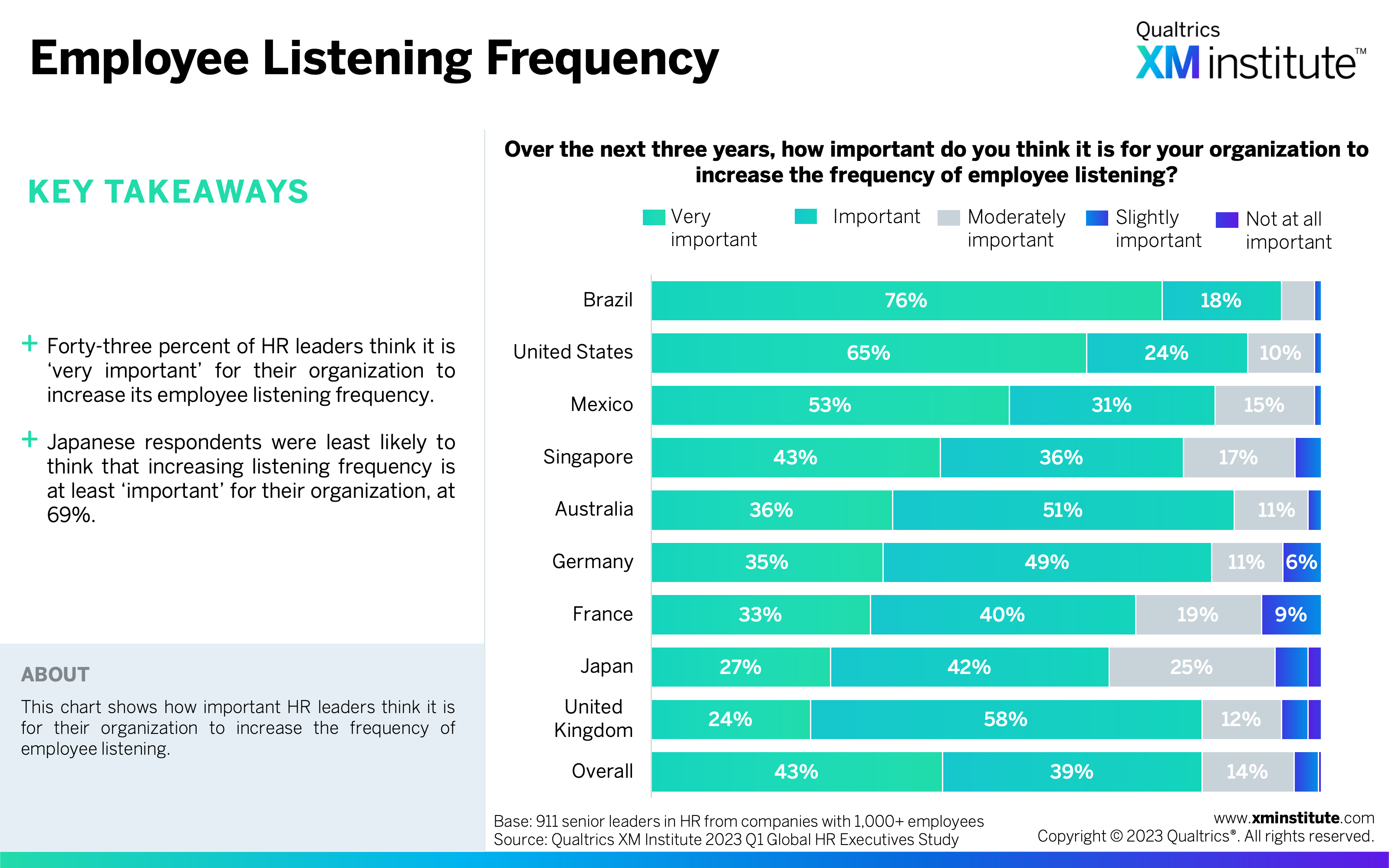
- Employee Experience Metrics
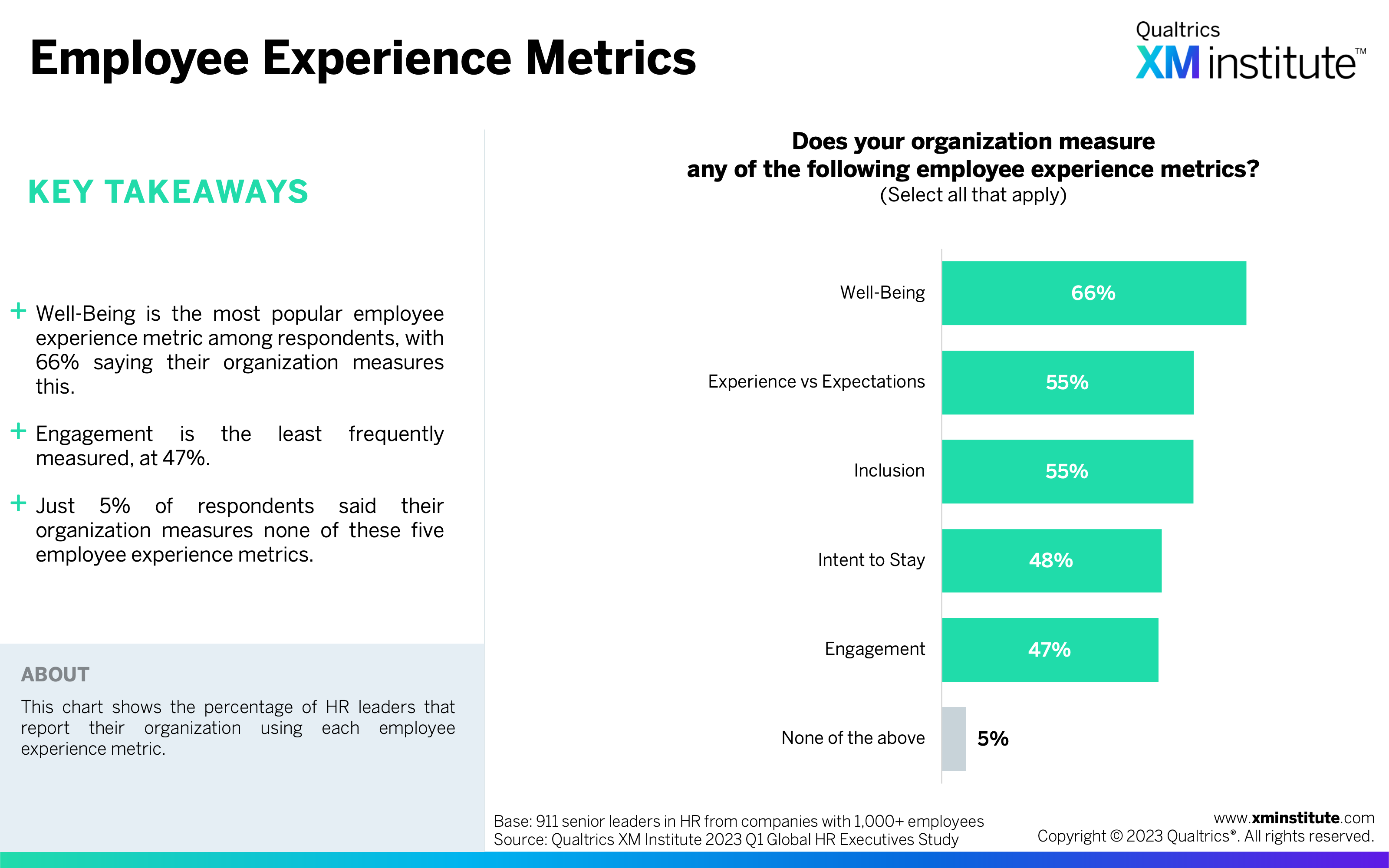
- Employee Experience Metrics Frequency
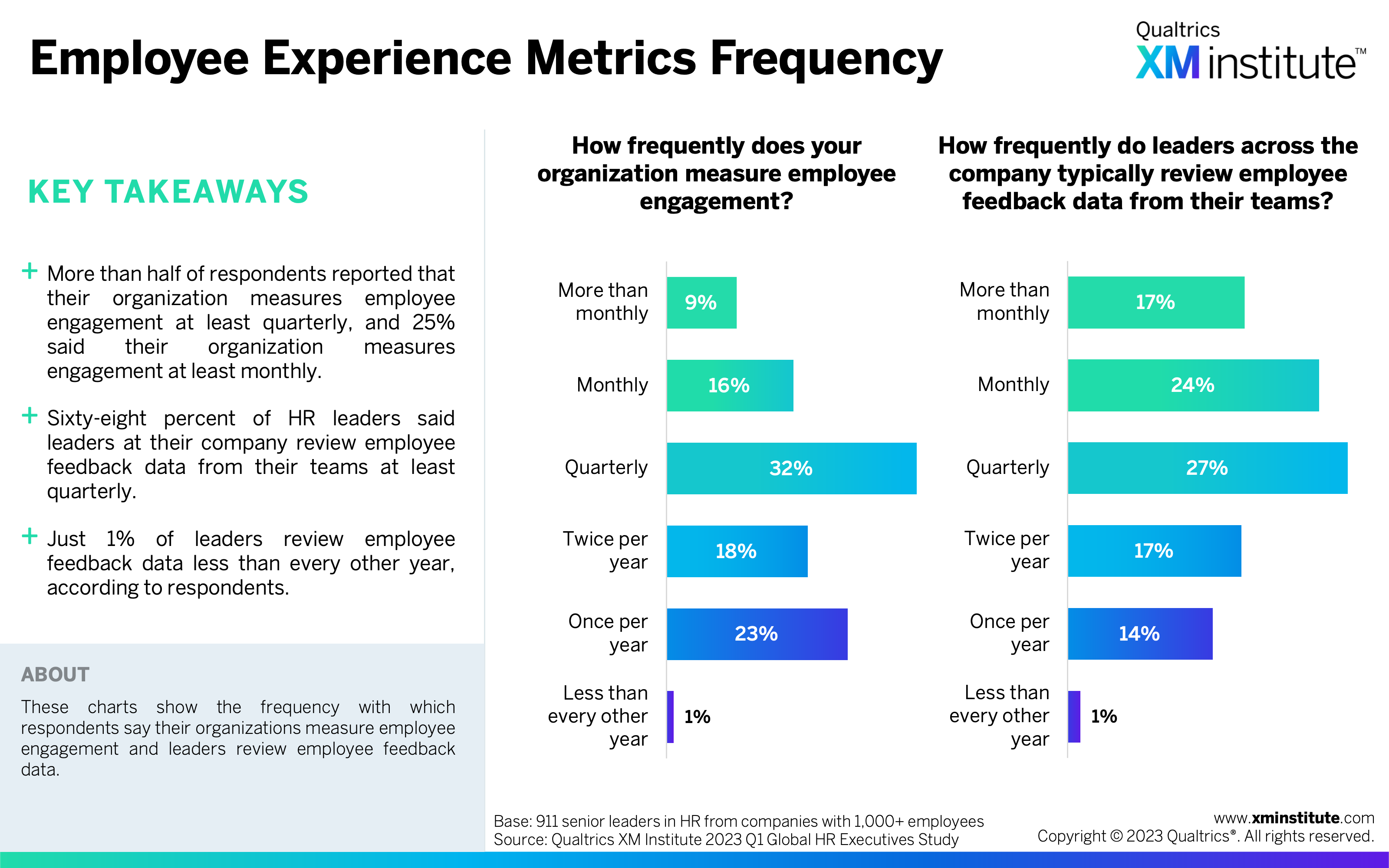
- Employee and Candidate Feedback Posts
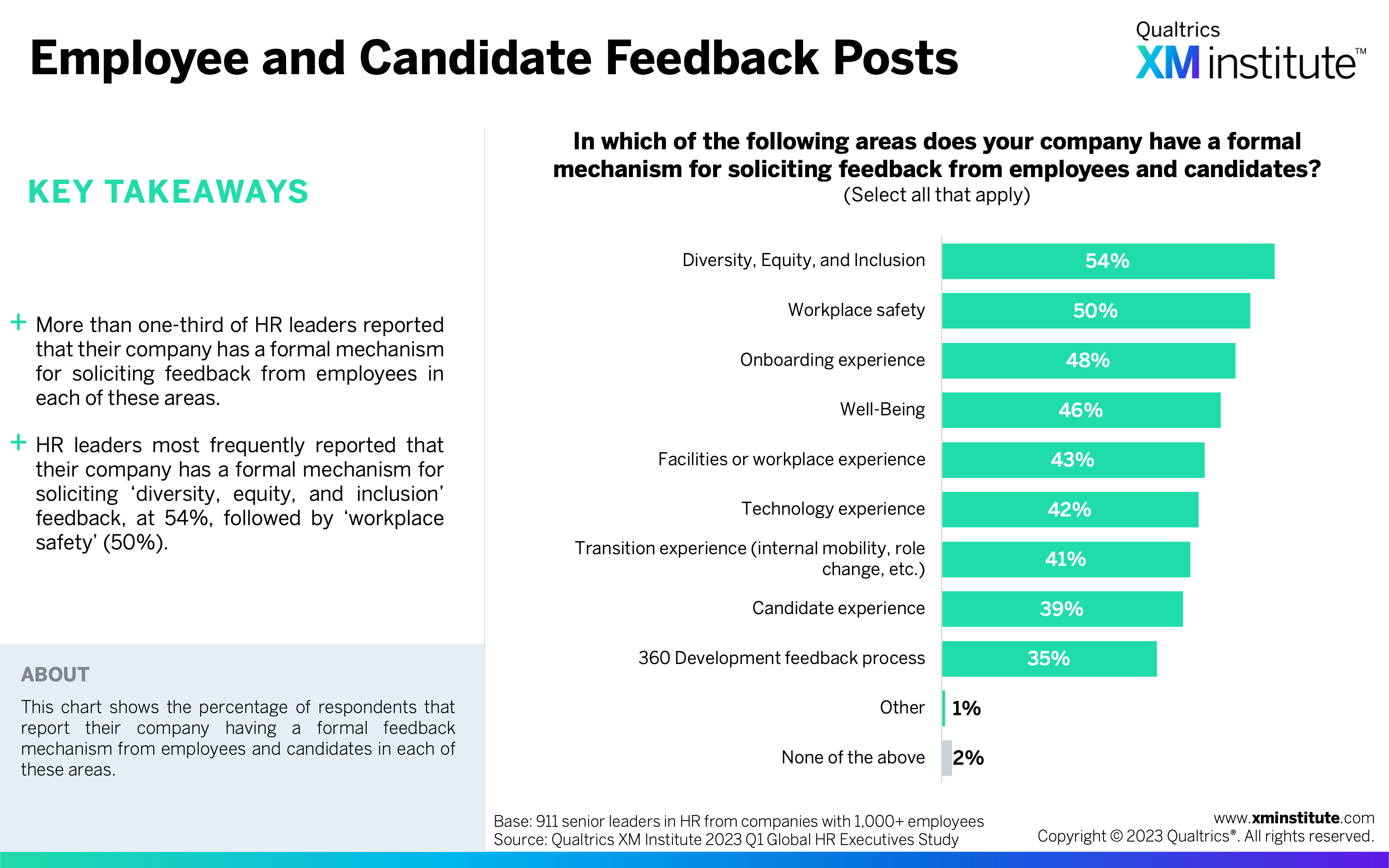
- Risks of Disparate Data Storage
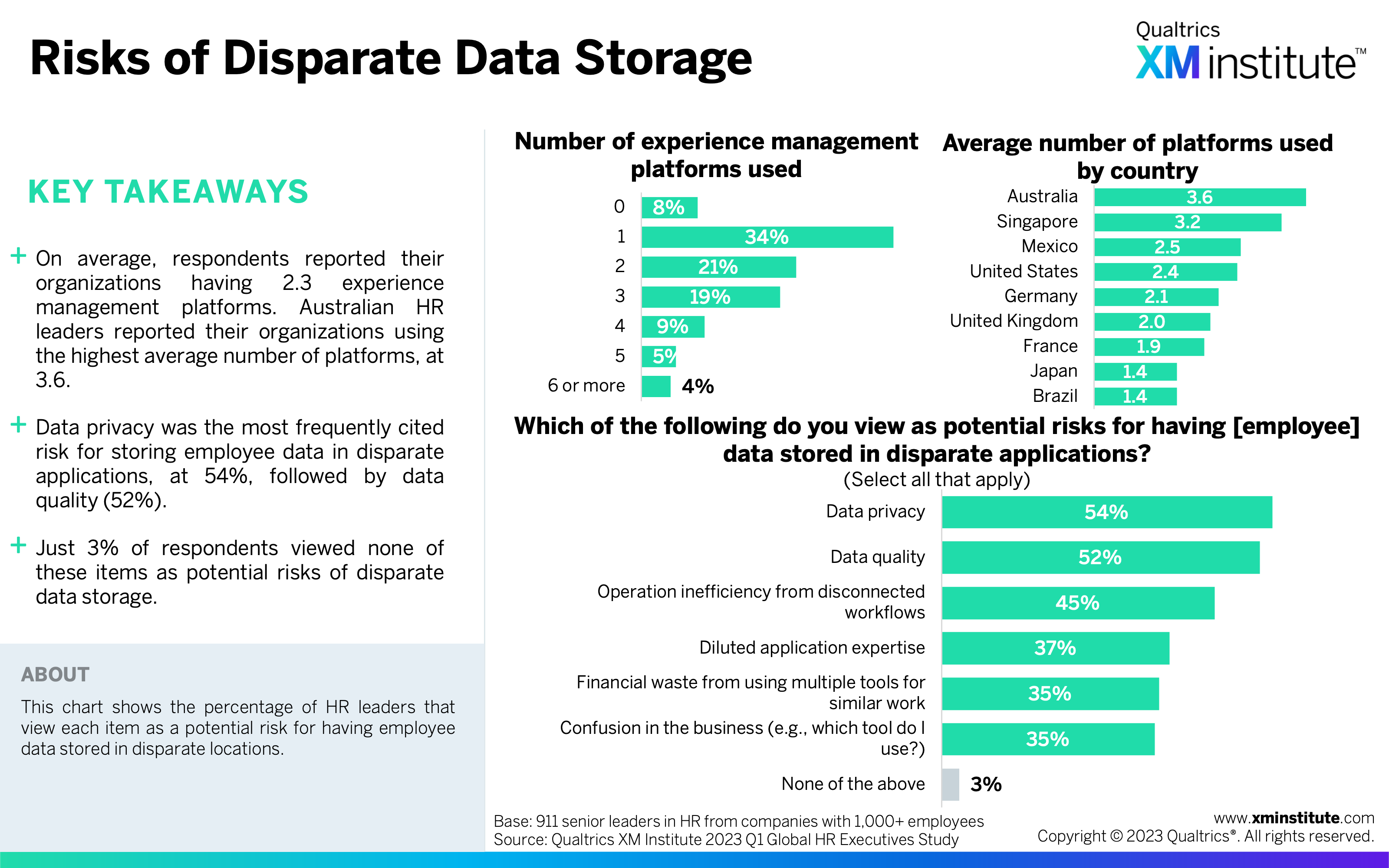
- EX Listening Frequency: by Company Size
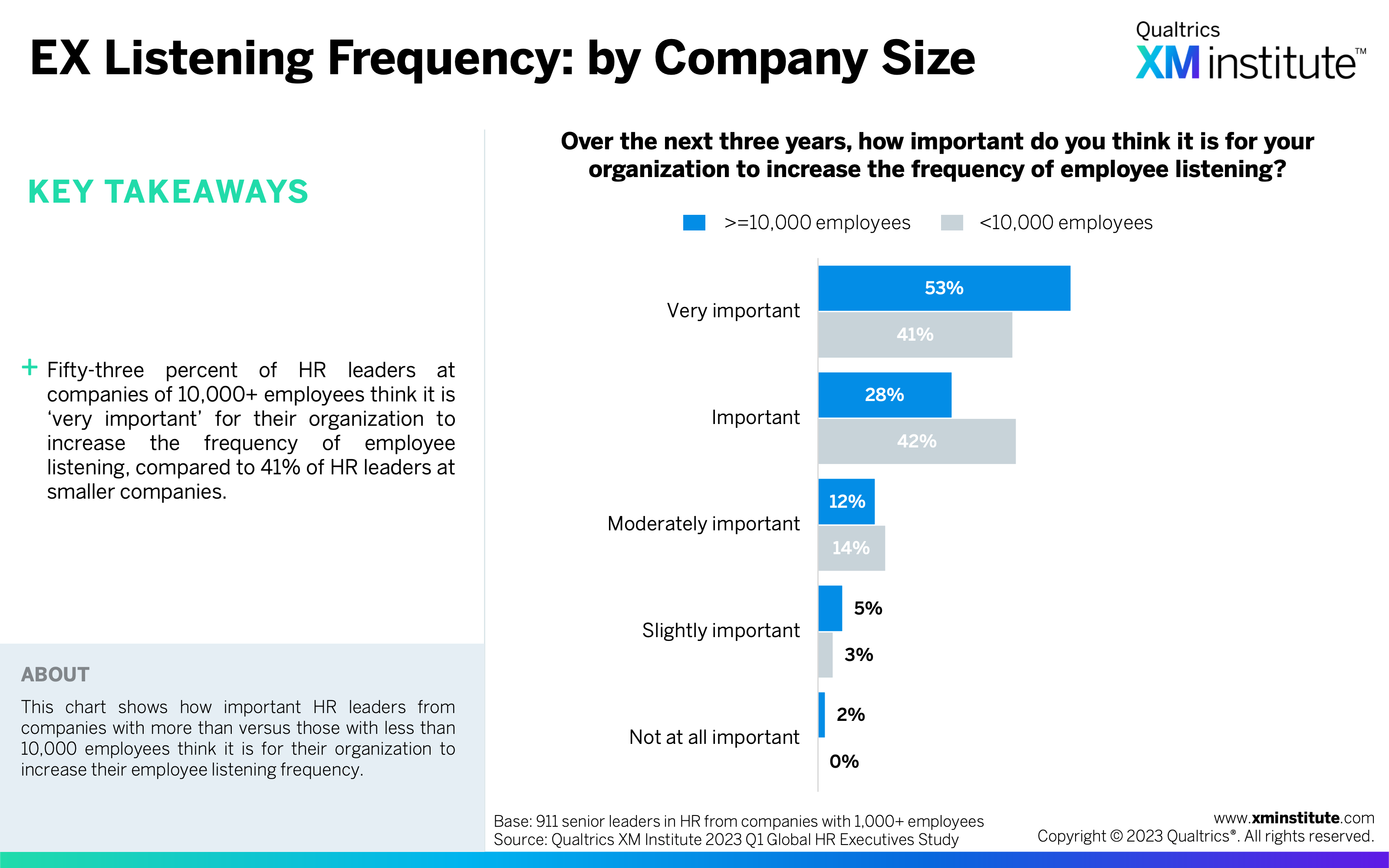
- EX Capabilities: by Company Size
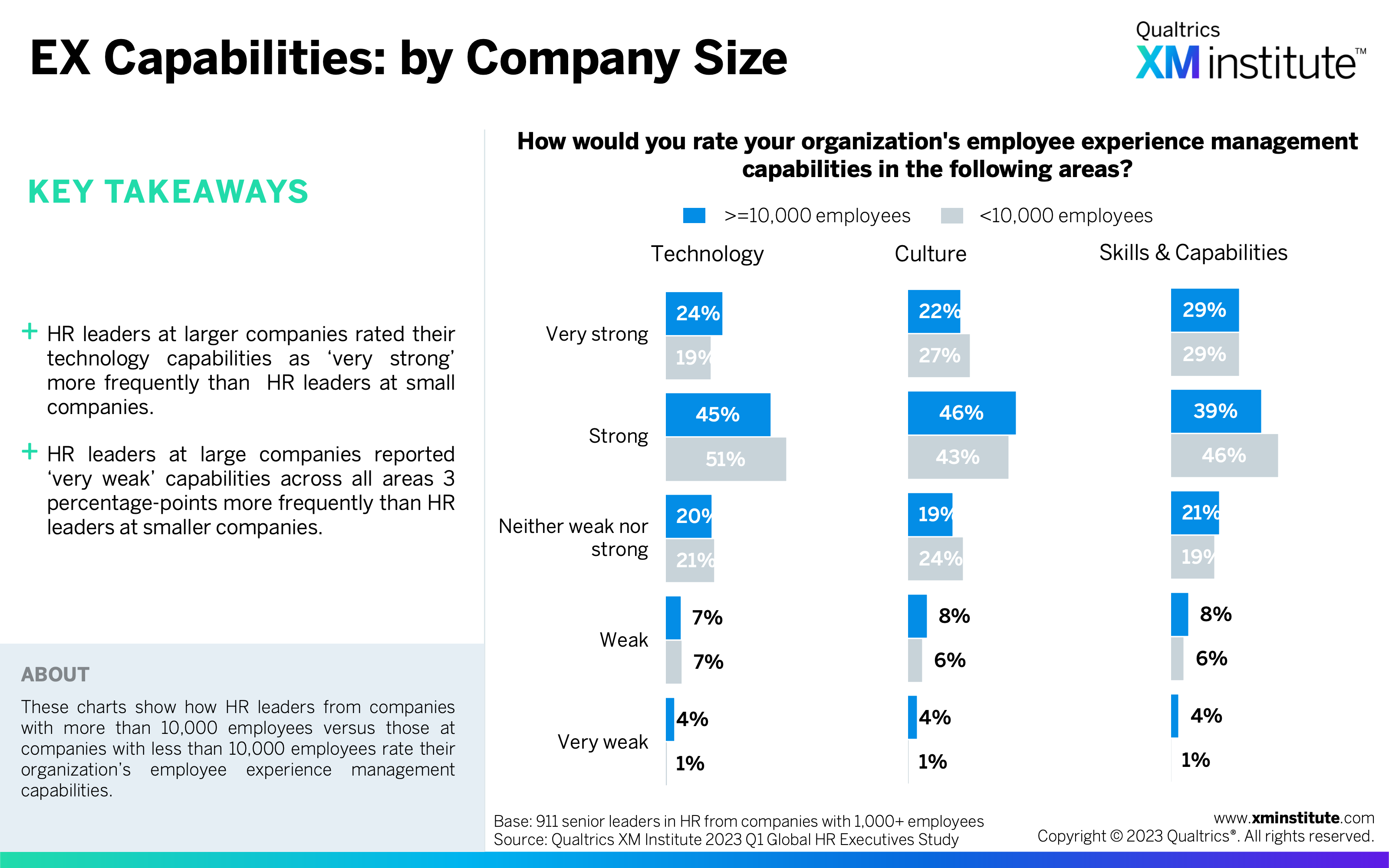
- 2023 Areas of Focus: by Company Size
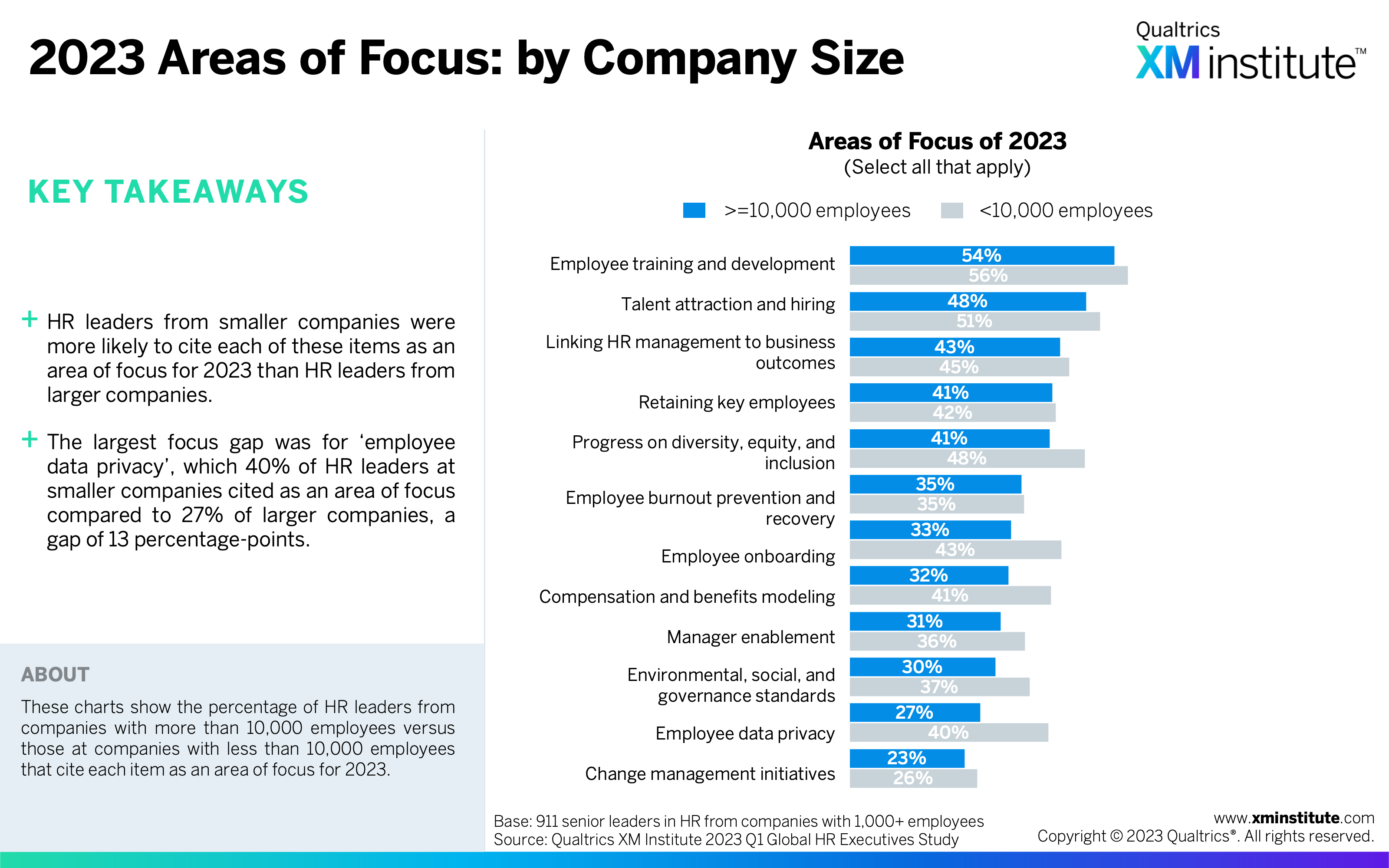
- EX Improvement Importance: by Company Size
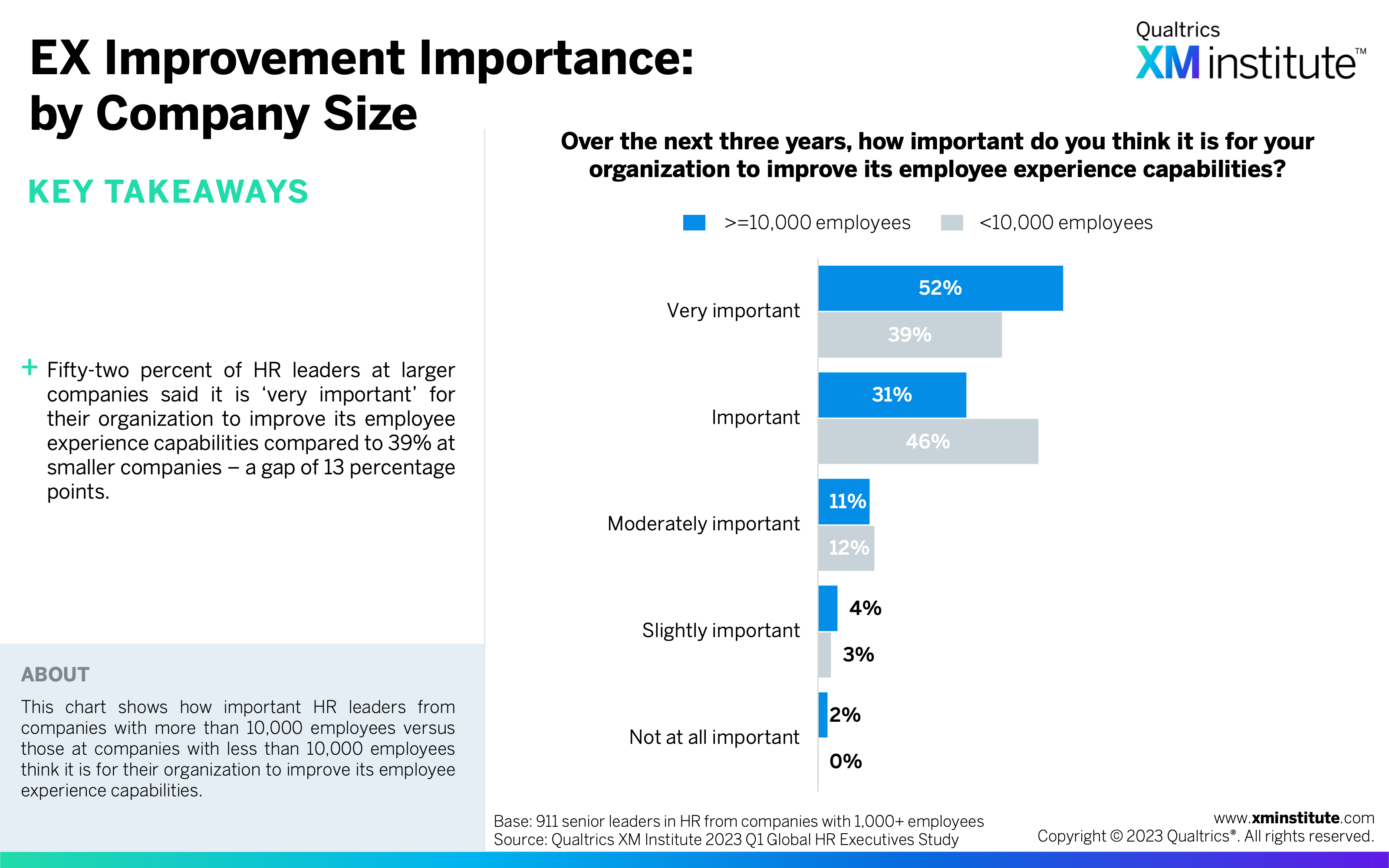
- Future XM Importance for HR: by Company Size
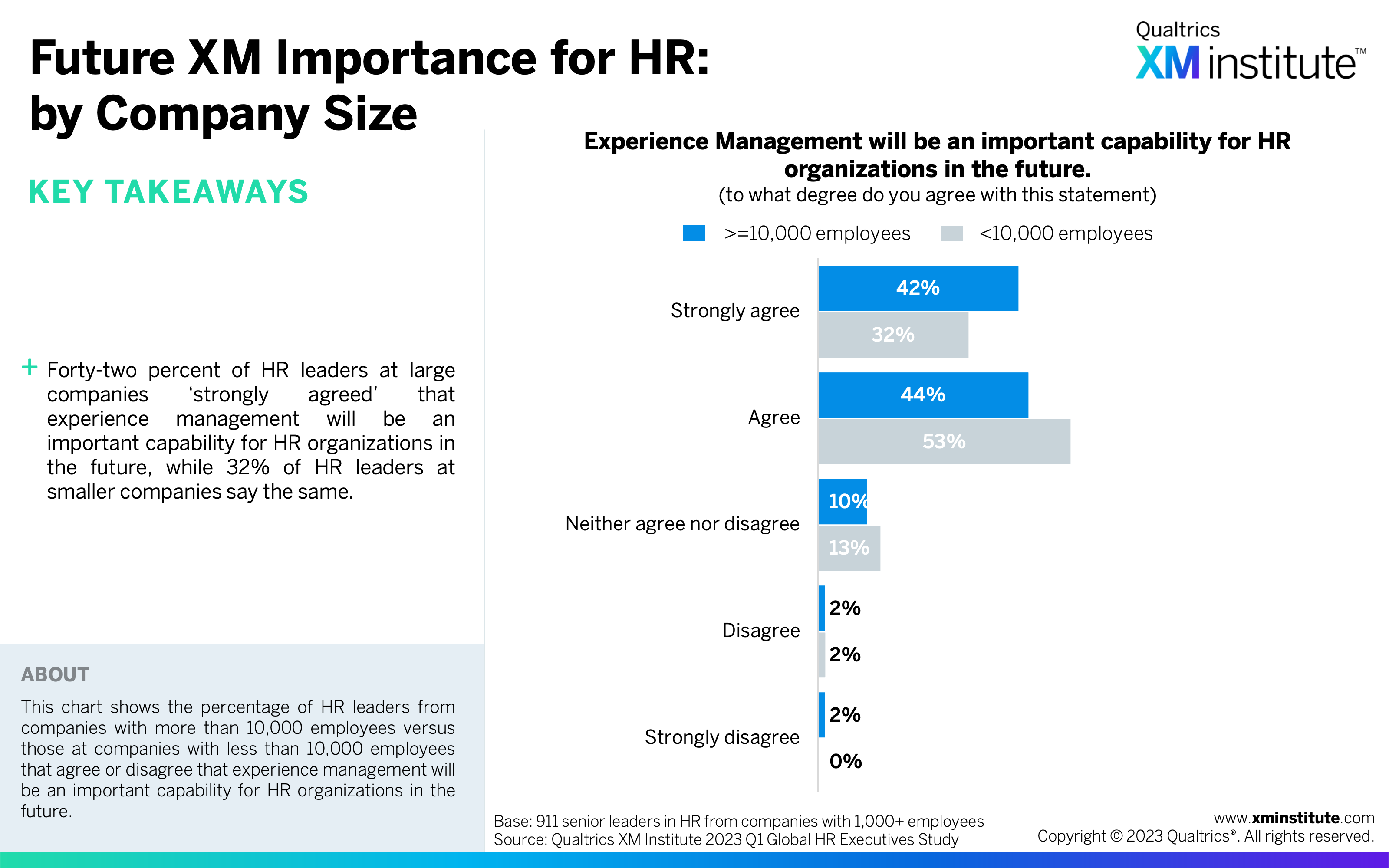
- EX Obstacles: by Company Size
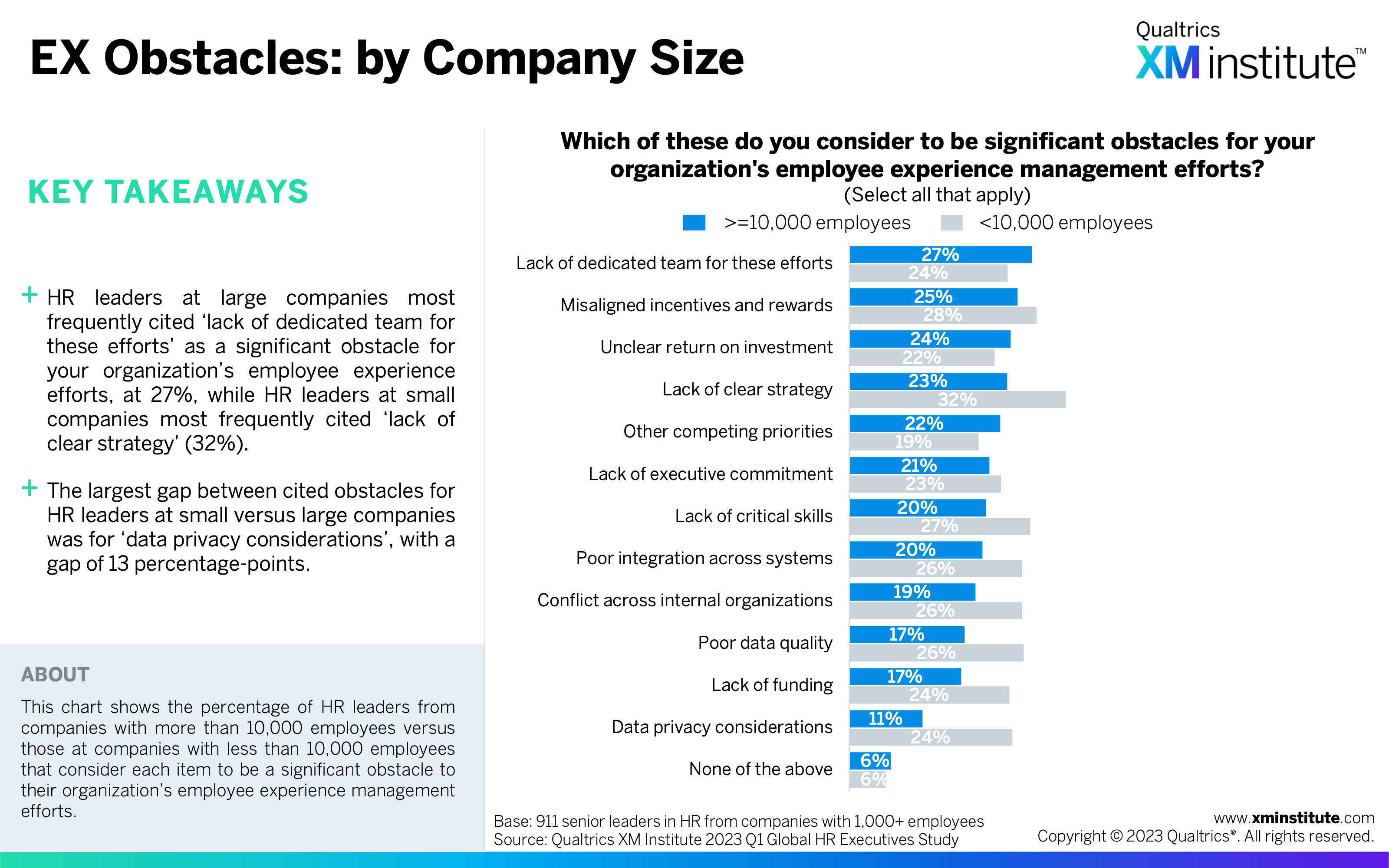
- Executive Use of EX Feedback: by Company Size
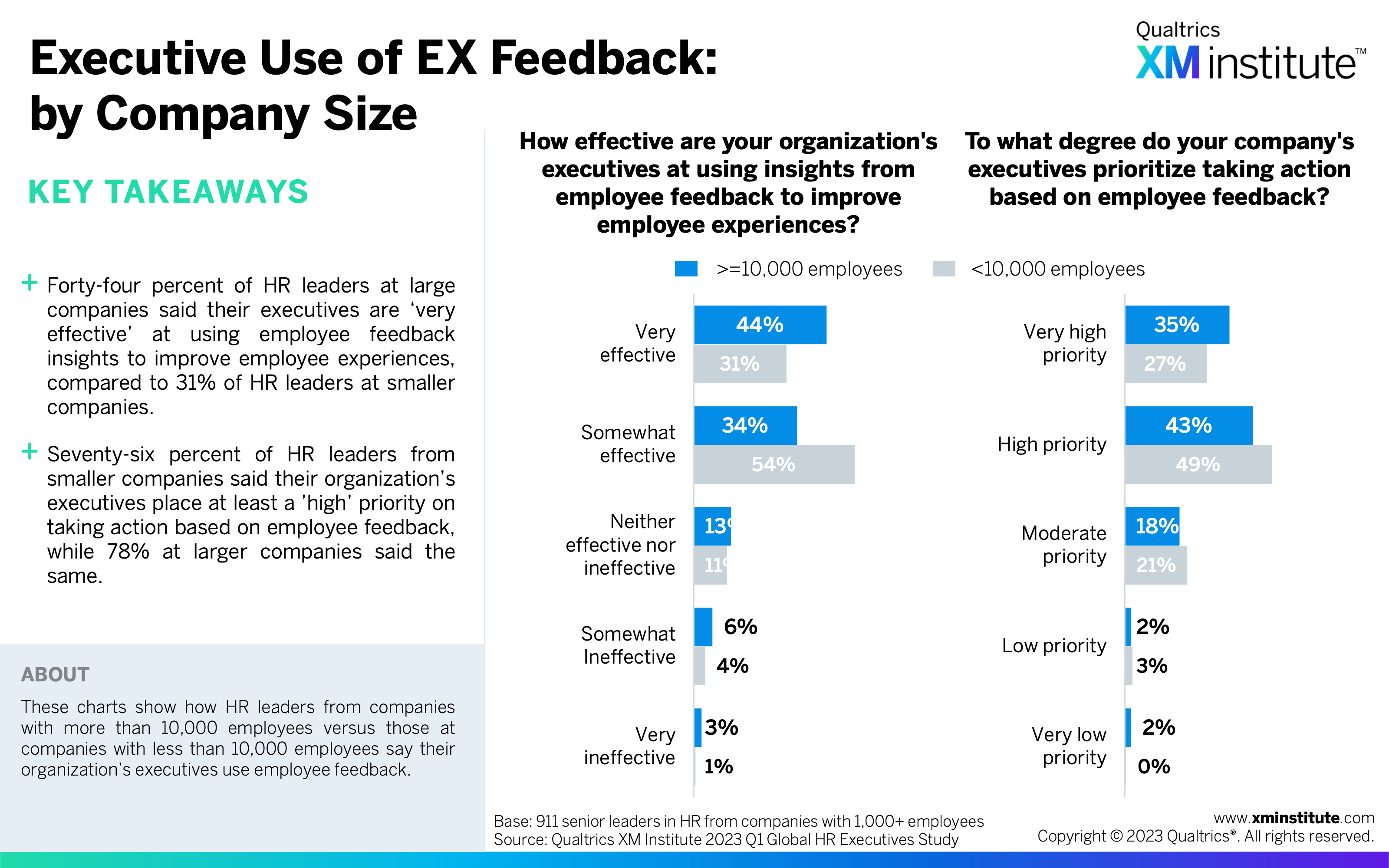
- Employee Experience Metrics: by Company Size
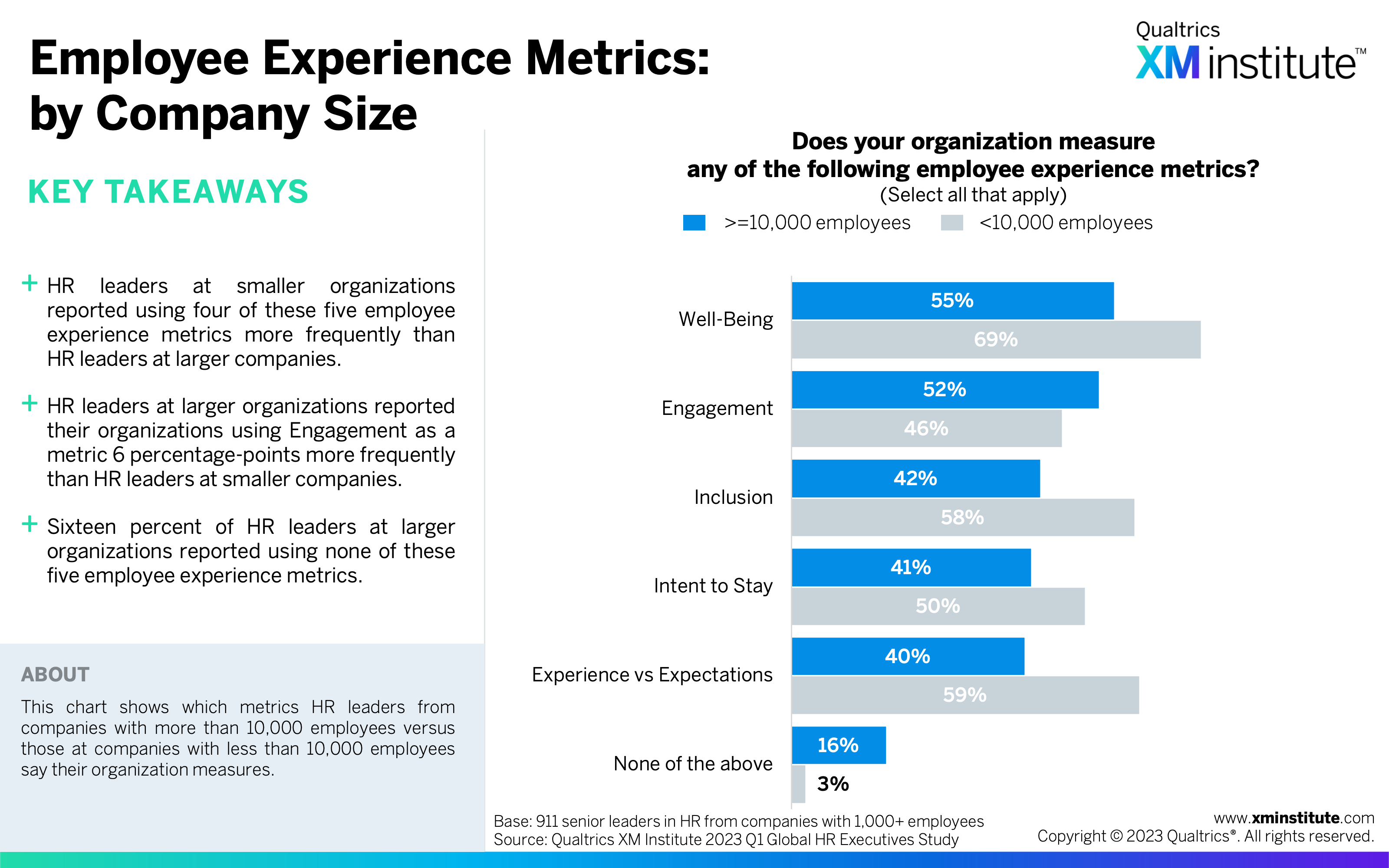
- Feedback Mechanisms: by Company Size
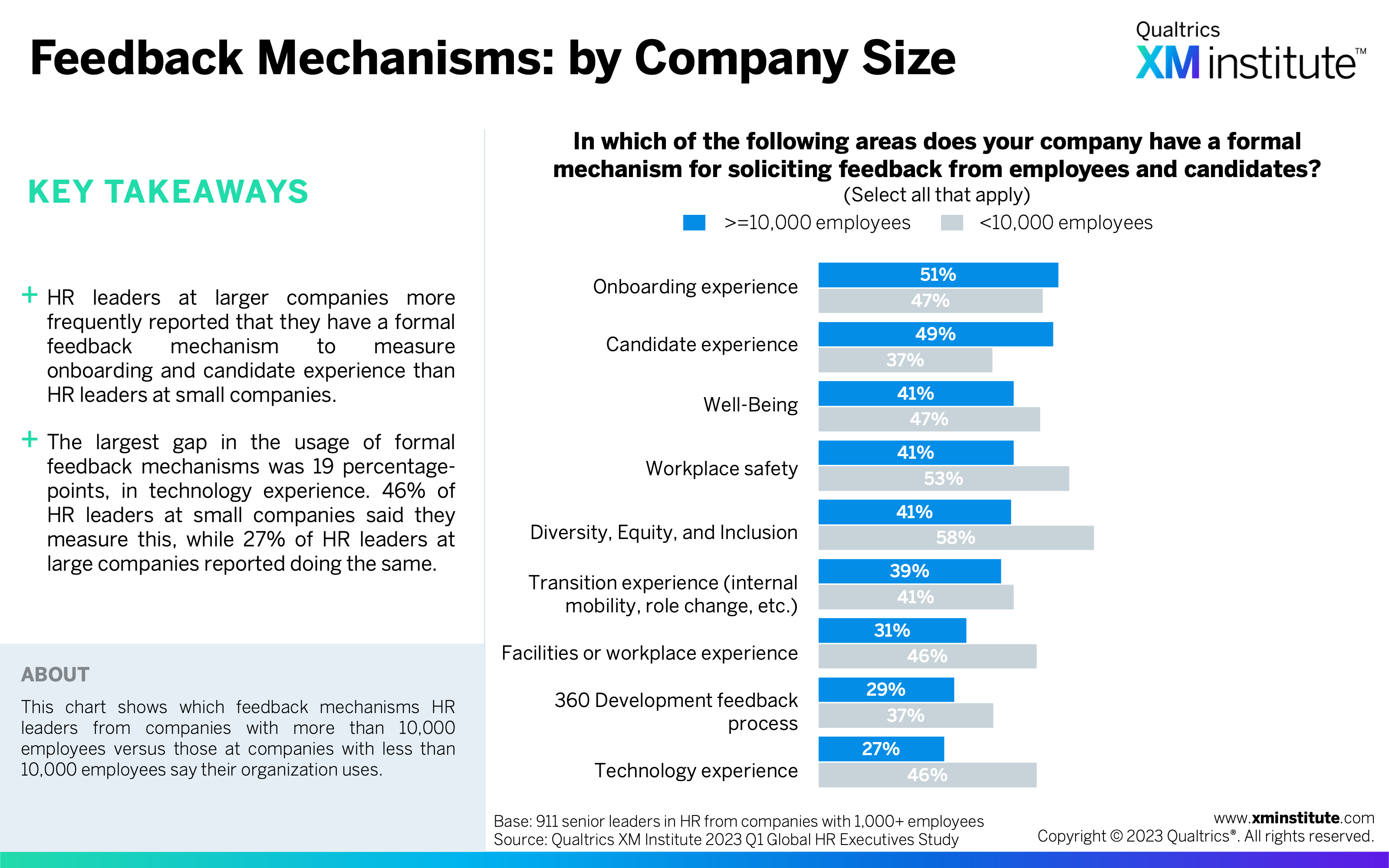
- Data Privacy Risks: by Company Size
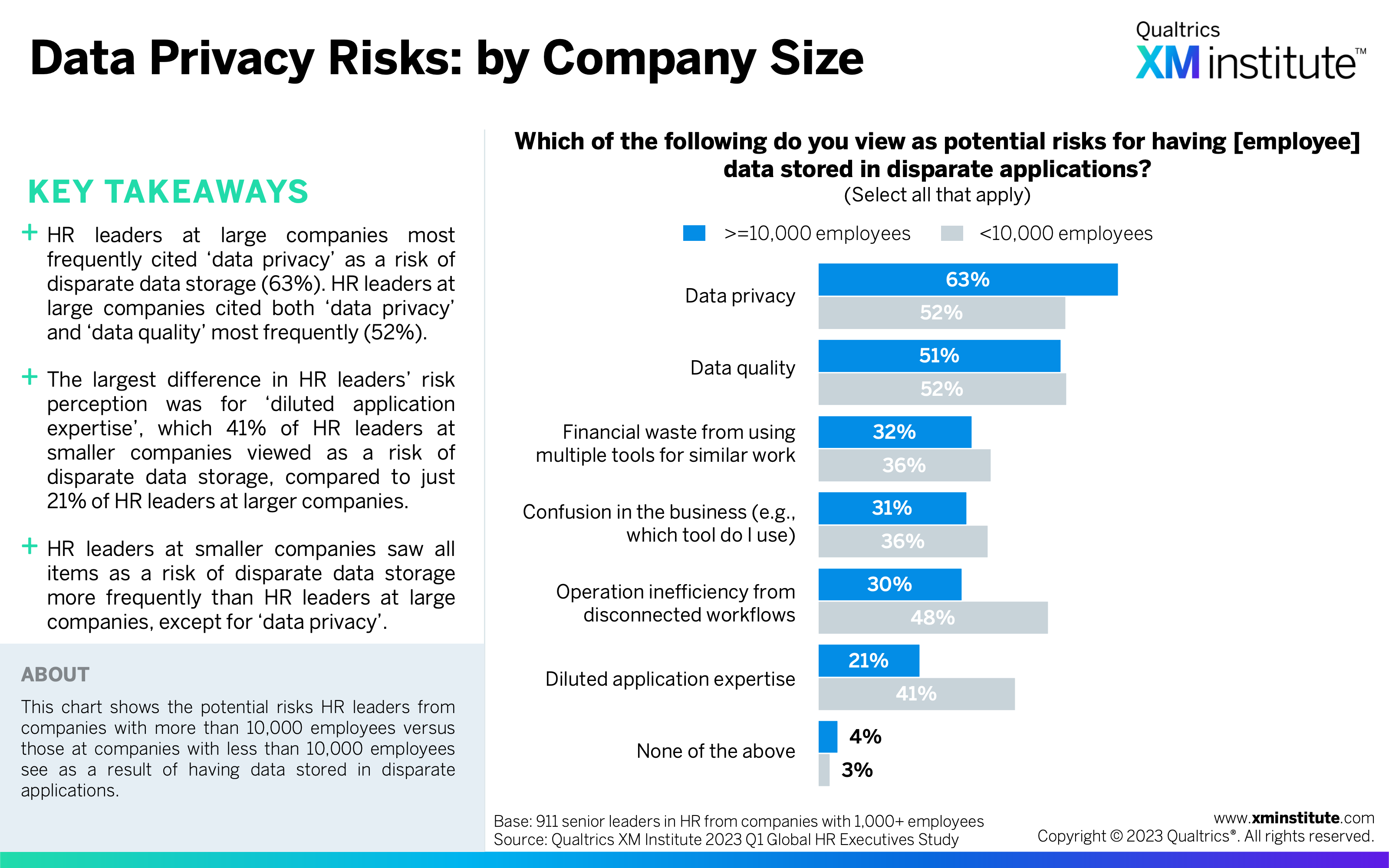
- Methodology
